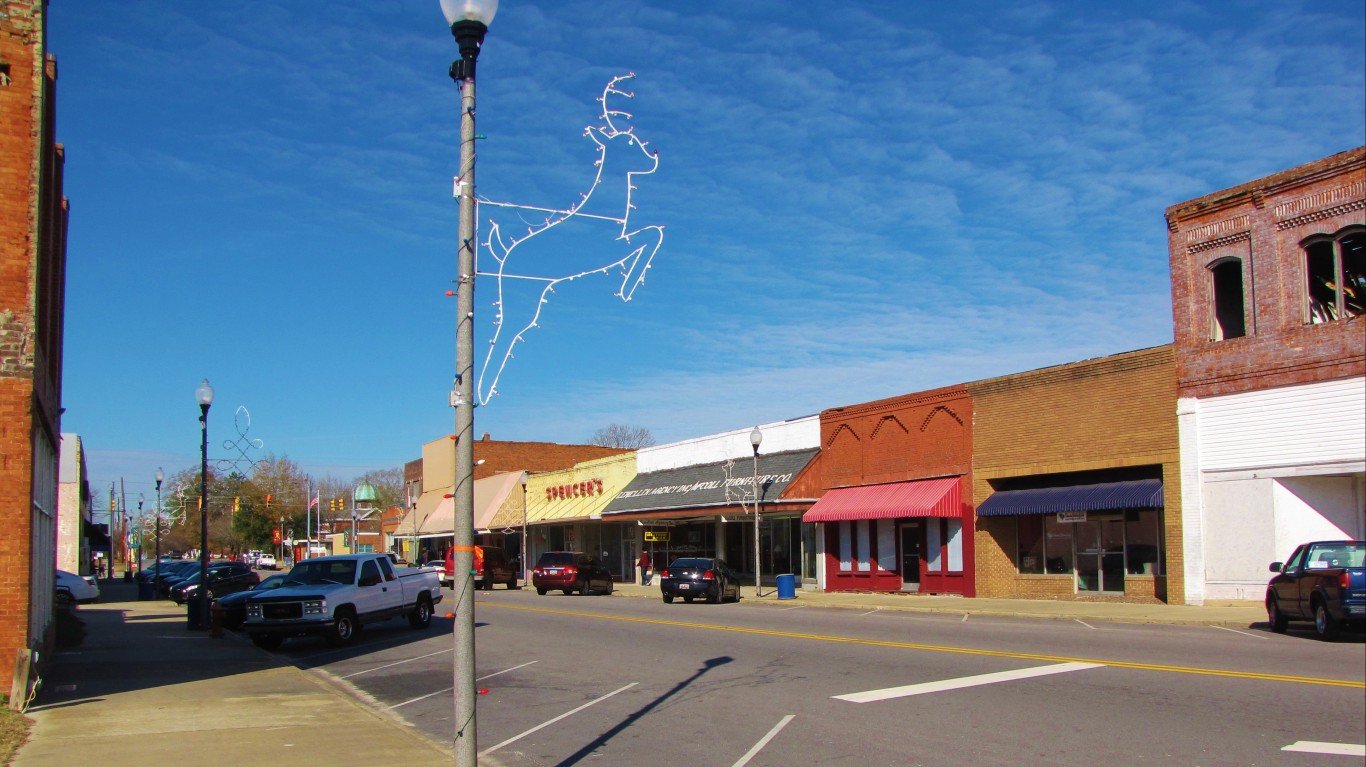

College enrollment has declined steadily in the United States in recent years. With rising tuition costs and surging student debt, enrollment rates have fallen at an average of nearly 2% a year since 2010. While four years of higher education may not be for everyone, Americans without a bachelor’s degree tend to be far more limited in their career opportunities, job security, and earning potential.
Nationwide, an estimated 32.1% of American adults 25 and older have a bachelor’s degree or higher. But across the United States, there are towns where fewer than 5% of adults have a bachelor’s degree or higher.
Using education data from the U.S. Census Bureau, 24/7 Wall St. identified the least educated towns in the United States. For the purposes of this story, towns are defined as any place covered by the census within the 50 states and Washington D.C. with a population between 1,000 and 25,000.
According to the Bureau of Labor Statistics, the unemployment rate among adults with a four-year college education was 5.5% 2020. Meanwhile, the jobless rate among those with no more than a high school diploma was 9.0%. In most of the towns on this list, the five-year average overall unemployment rate among 25- to 64-year-olds is higher than the comparable national rate of 4.4%.
In addition to being better protected from unemployment, Americans with a bachelor’s degree also tend to have higher salaries. The average weekly wage for a college-educated worker in the United States is about 67% higher than it is for those with no more than a high school diploma. And in places with lower than average educational attainment, incomes also tend to be lower than average. In all but one town on this list, the typical household earns less in a year than the national median household income of $62,843.
Click here to see America’s least educated towns
Click here to see our detailed methodology
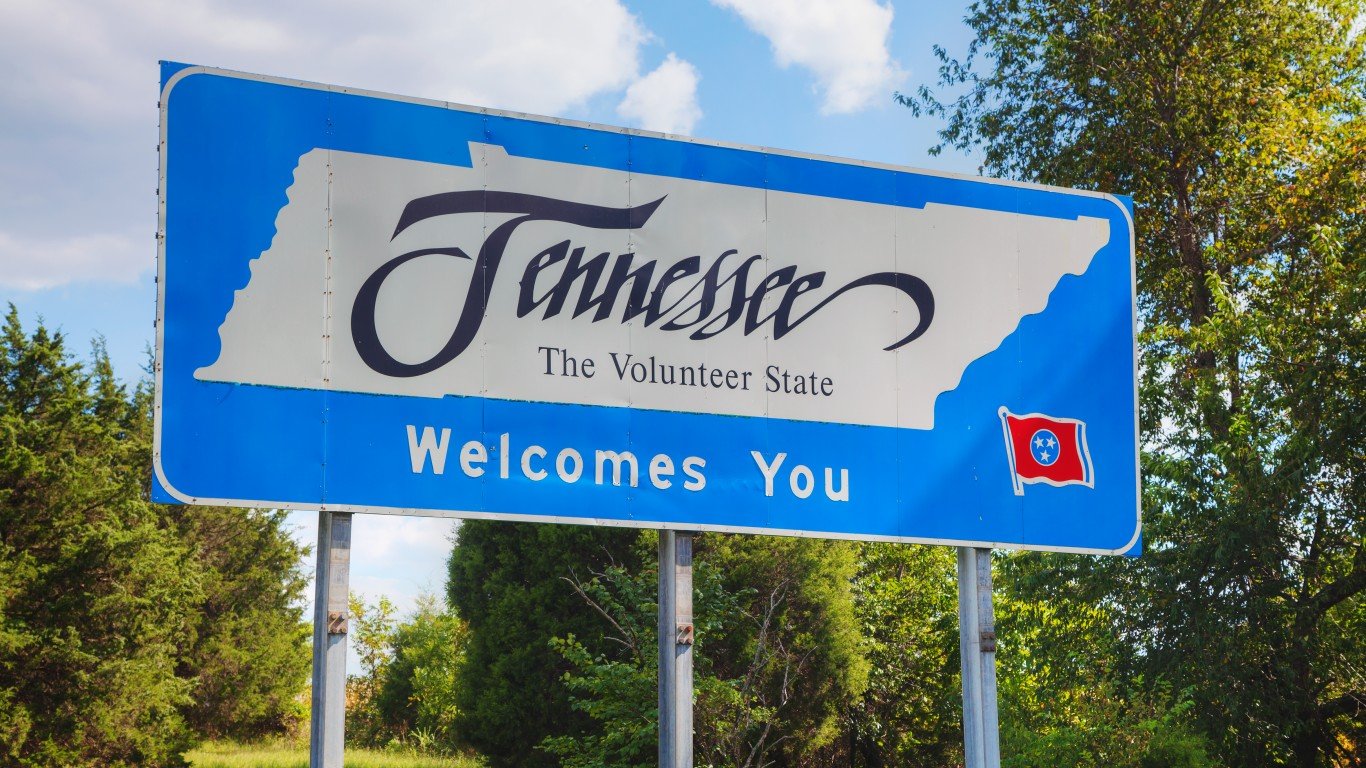
50. Gruetli-Laager, Tennessee
> Adults with at least a bachelor’s degree: 4.1%
> Adults with at least a high school diploma or equivalent: 77.3% — 973rd lowest of 10,738 towns (tied)
> Median household income: $50,304 — 4,145th lowest of 10,733 towns
> Estimated unemployment rate 2015-2019: 11.1% — 732nd highest of 10,738 towns (tied)
> Population: 2,429
[in-text-ad]

49. Sandy Oaks, Texas
> Adults with at least a bachelor’s degree: 4.0%
> Adults with at least a high school diploma or equivalent: 71.2% — 411th lowest of 10,738 towns (tied)
> Median household income: $50,987 — 4,280th lowest of 10,733 towns
> Estimated unemployment rate 2015-2019: 8.6% — 1,568th highest of 10,738 towns (tied)
> Population: 4,471
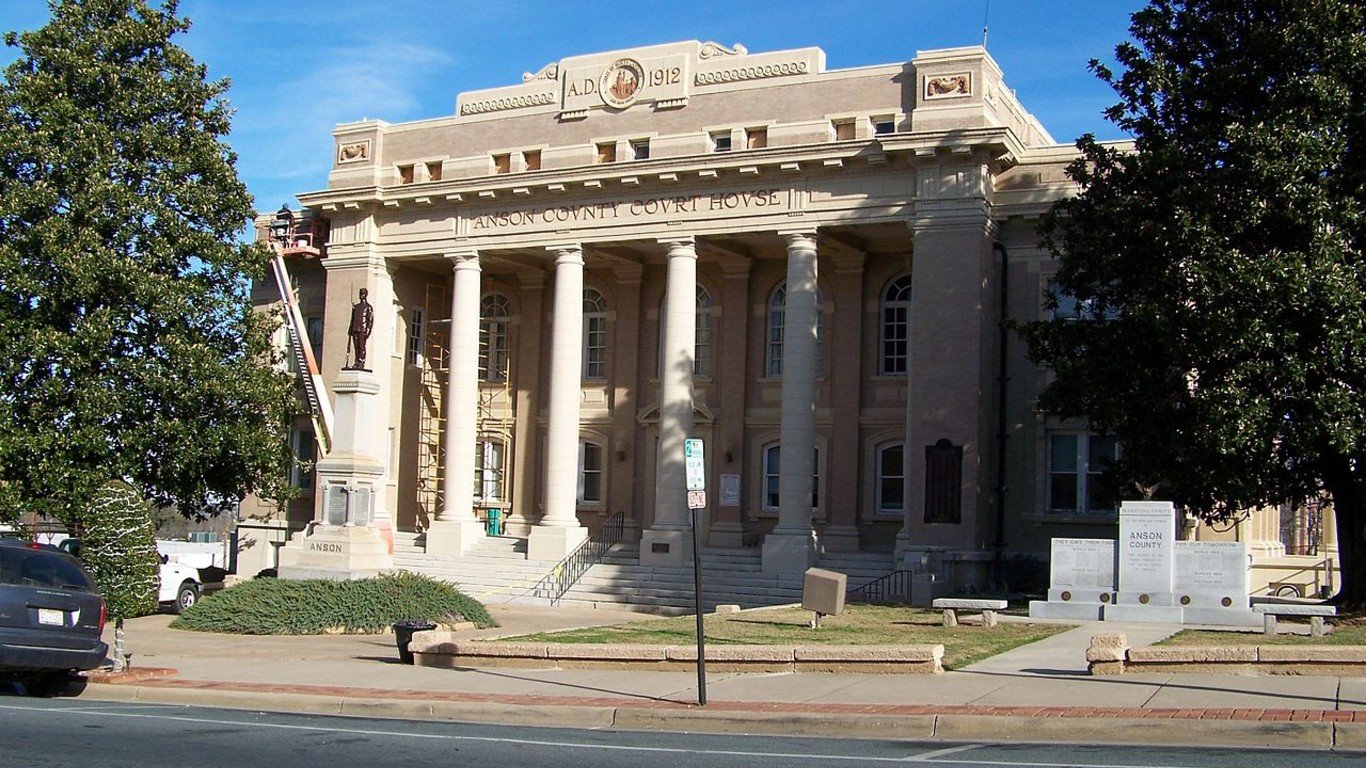
48. Polkton, North Carolina
> Adults with at least a bachelor’s degree: 4.0%
> Adults with at least a high school diploma or equivalent: 73.1% — 541st lowest of 10,738 towns (tied)
> Median household income: $39,808 — 1,877th lowest of 10,733 towns (tied)
> Estimated unemployment rate 2015-2019: 7.9% — 1,964th highest of 10,738 towns (tied)
> Population: 2,921
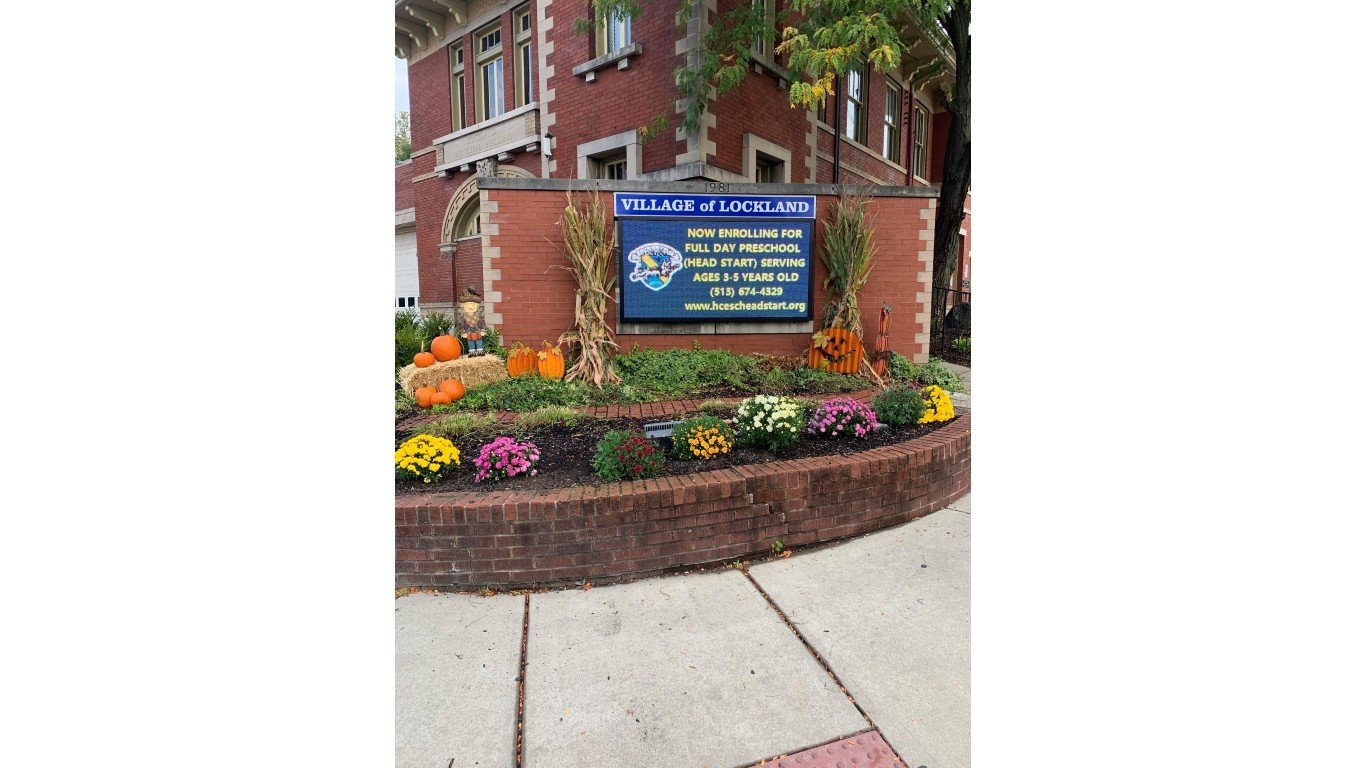
47. Lockland, Ohio
> Adults with at least a bachelor’s degree: 4.0%
> Adults with at least a high school diploma or equivalent: 74.4% — 654th lowest of 10,738 towns (tied)
> Median household income: $28,542 — 351st lowest of 10,733 towns
> Estimated unemployment rate 2015-2019: 12.0% — 543rd highest of 10,738 towns (tied)
> Population: 3,450
[in-text-ad-2]

46. Wapato, Washington
> Adults with at least a bachelor’s degree: 4.0%
> Adults with at least a high school diploma or equivalent: 50.6% — 32nd lowest of 10,738 towns
> Median household income: $40,772 — 2,073rd lowest of 10,733 towns
> Estimated unemployment rate 2015-2019: 14.6% — 239th highest of 10,738 towns (tied)
> Population: 5,041
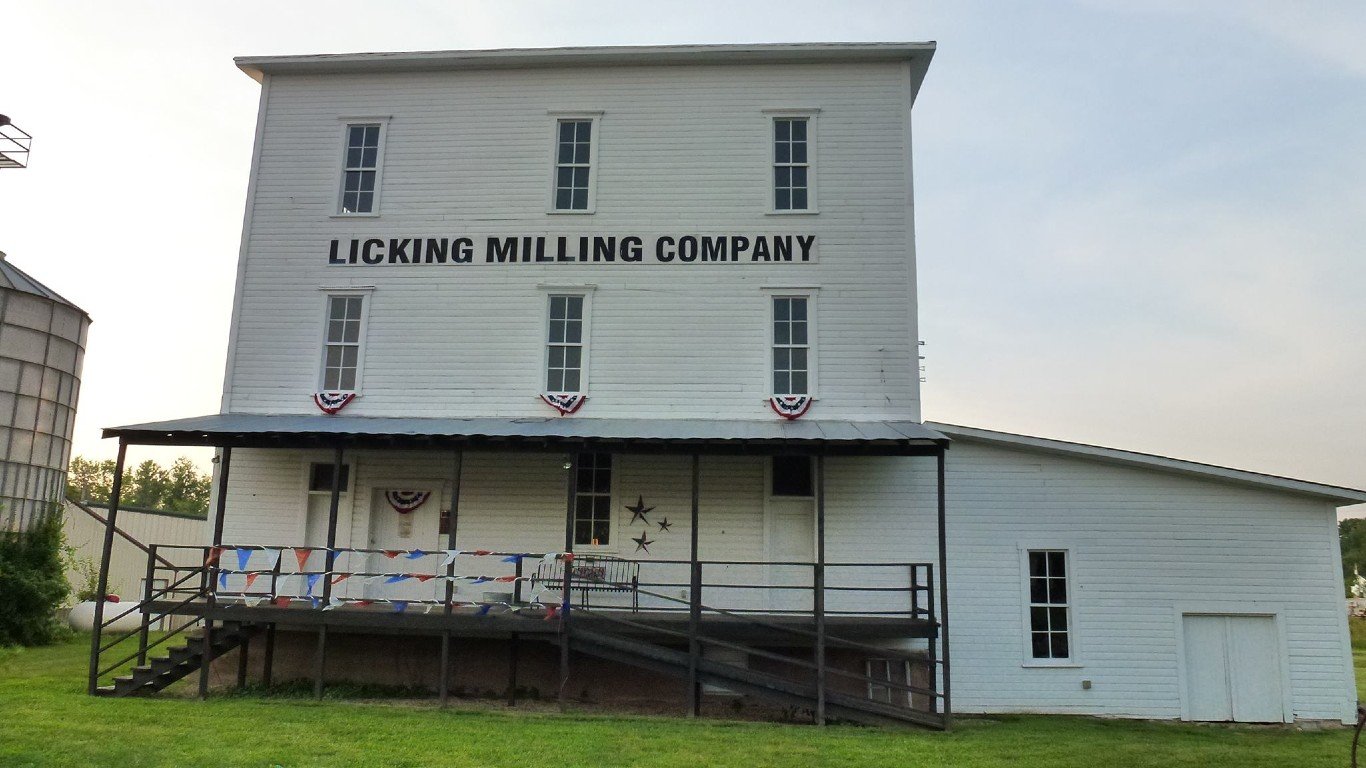
45. Licking, Missouri
> Adults with at least a bachelor’s degree: 3.9%
> Adults with at least a high school diploma or equivalent: 82.9% — 2,035th lowest of 10,738 towns (tied)
> Median household income: $28,086 — 329th lowest of 10,733 towns
> Estimated unemployment rate 2015-2019: 11.7% — 595th highest of 10,738 towns (tied)
> Population: 2,705
[in-text-ad]
44. Terra Alta, West Virginia
> Adults with at least a bachelor’s degree: 3.9%
> Adults with at least a high school diploma or equivalent: 84.8% — 2,588th lowest of 10,738 towns (tied)
> Median household income: $34,632 — 1,040th lowest of 10,733 towns
> Estimated unemployment rate 2015-2019: 9.2% — 1,291st highest of 10,738 towns (tied)
> Population: 1,736
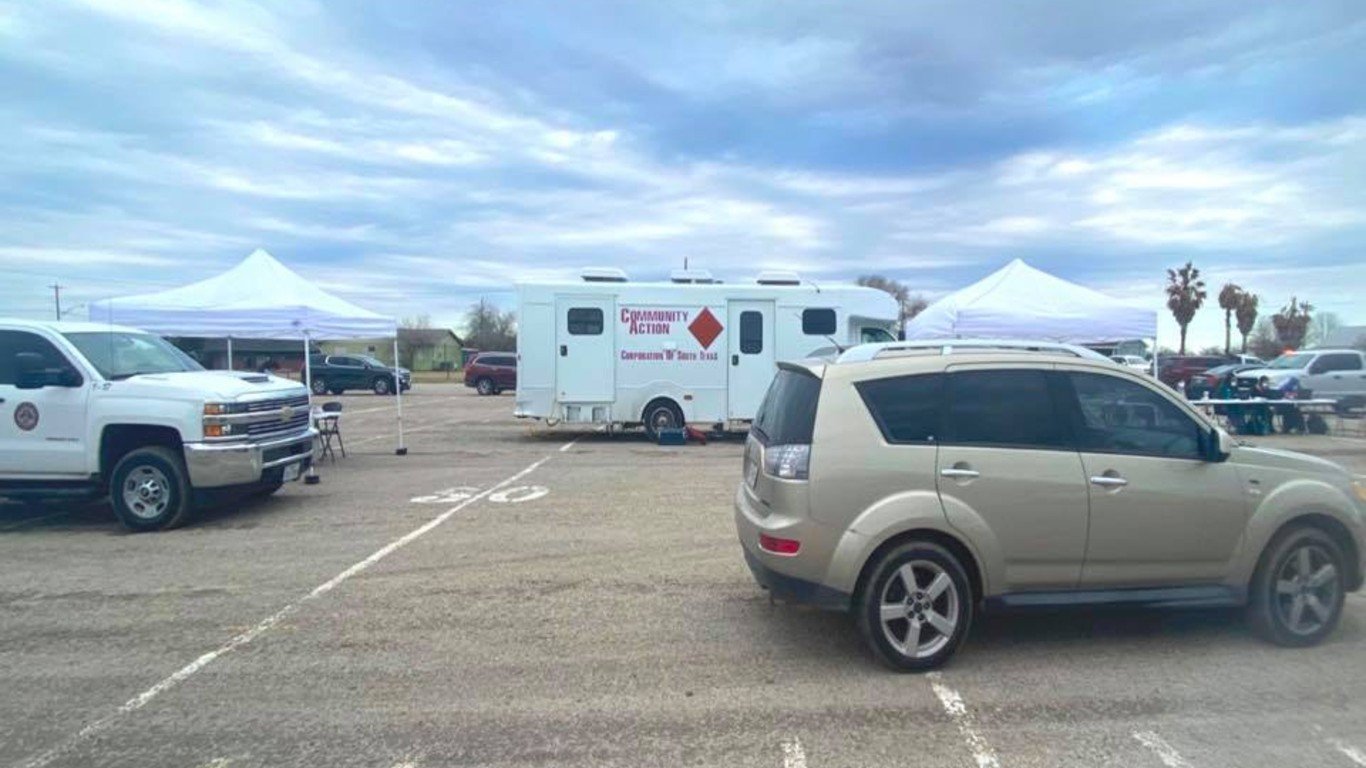
43. Mathis, Texas
> Adults with at least a bachelor’s degree: 3.9%
> Adults with at least a high school diploma or equivalent: 56.2% — 64th lowest of 10,738 towns (tied)
> Median household income: $31,818 — 644th lowest of 10,733 towns (tied)
> Estimated unemployment rate 2015-2019: 5.6% — 4,069th highest of 10,738 towns (tied)
> Population: 4,826
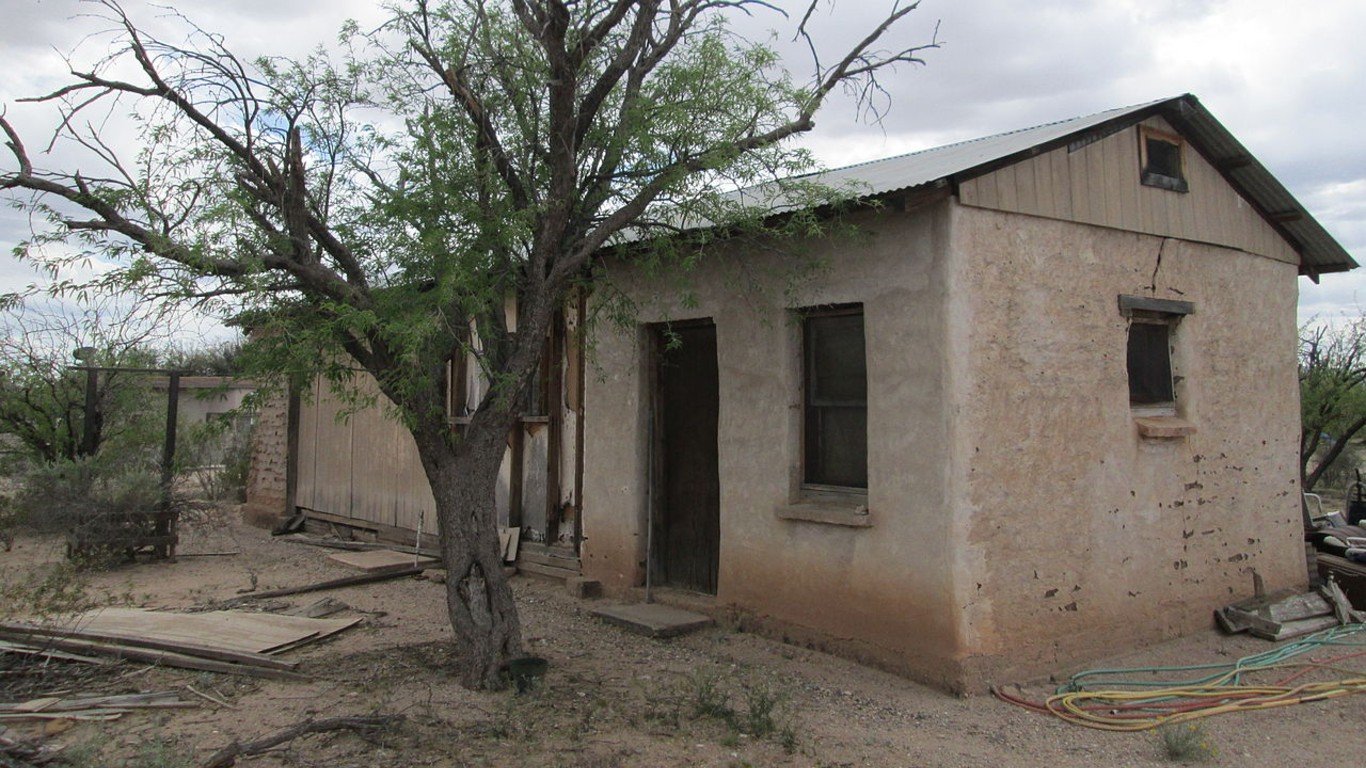
42. Summit, Arizona
> Adults with at least a bachelor’s degree: 3.9%
> Adults with at least a high school diploma or equivalent: 60.0% — 102nd lowest of 10,738 towns (tied)
> Median household income: $37,275 — 1,452nd lowest of 10,733 towns
> Estimated unemployment rate 2015-2019: 16.1% — 158th highest of 10,738 towns (tied)
> Population: 4,707
[in-text-ad-2]
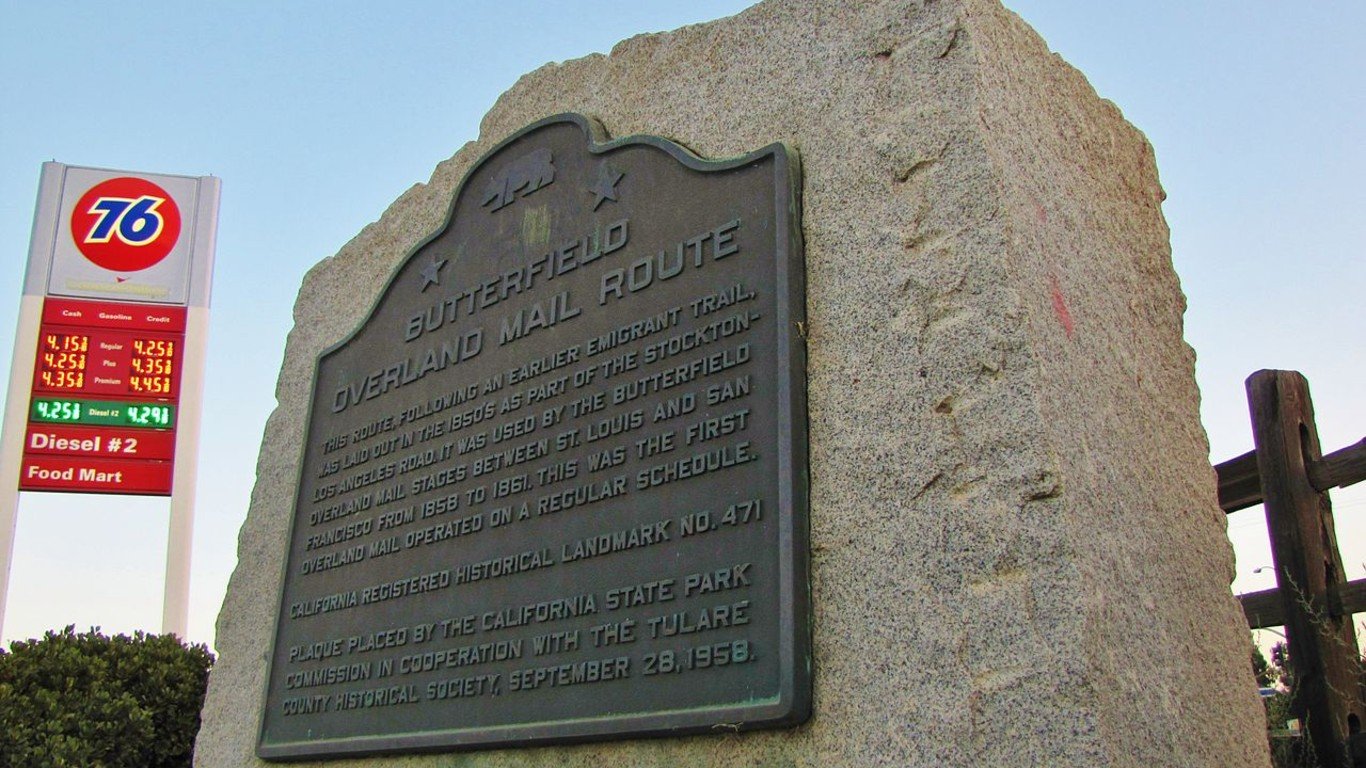
41. Lindsay, California
> Adults with at least a bachelor’s degree: 3.9%
> Adults with at least a high school diploma or equivalent: 46.7% — 22nd lowest of 10,738 towns
> Median household income: $31,489 — 607th lowest of 10,733 towns
> Estimated unemployment rate 2015-2019: 16.0% — 162nd highest of 10,738 towns (tied)
> Population: 13,310

40. Southeast Arcadia, Florida
> Adults with at least a bachelor’s degree: 3.8%
> Adults with at least a high school diploma or equivalent: 57.6% — 73rd lowest of 10,738 towns (tied)
> Median household income: $28,404 — 344th lowest of 10,733 towns
> Estimated unemployment rate 2015-2019: 3.3% — 7,488th highest of 10,738 towns (tied)
> Population: 8,272
[in-text-ad]

39. Kaser, New York
> Adults with at least a bachelor’s degree: 3.8%
> Adults with at least a high school diploma or equivalent: 67.0% — 246th lowest of 10,738 towns (tied)
> Median household income: $21,541 — 50th lowest of 10,733 towns
> Estimated unemployment rate 2015-2019: 6.2% — 3,386th highest of 10,738 towns (tied)
> Population: 5,262
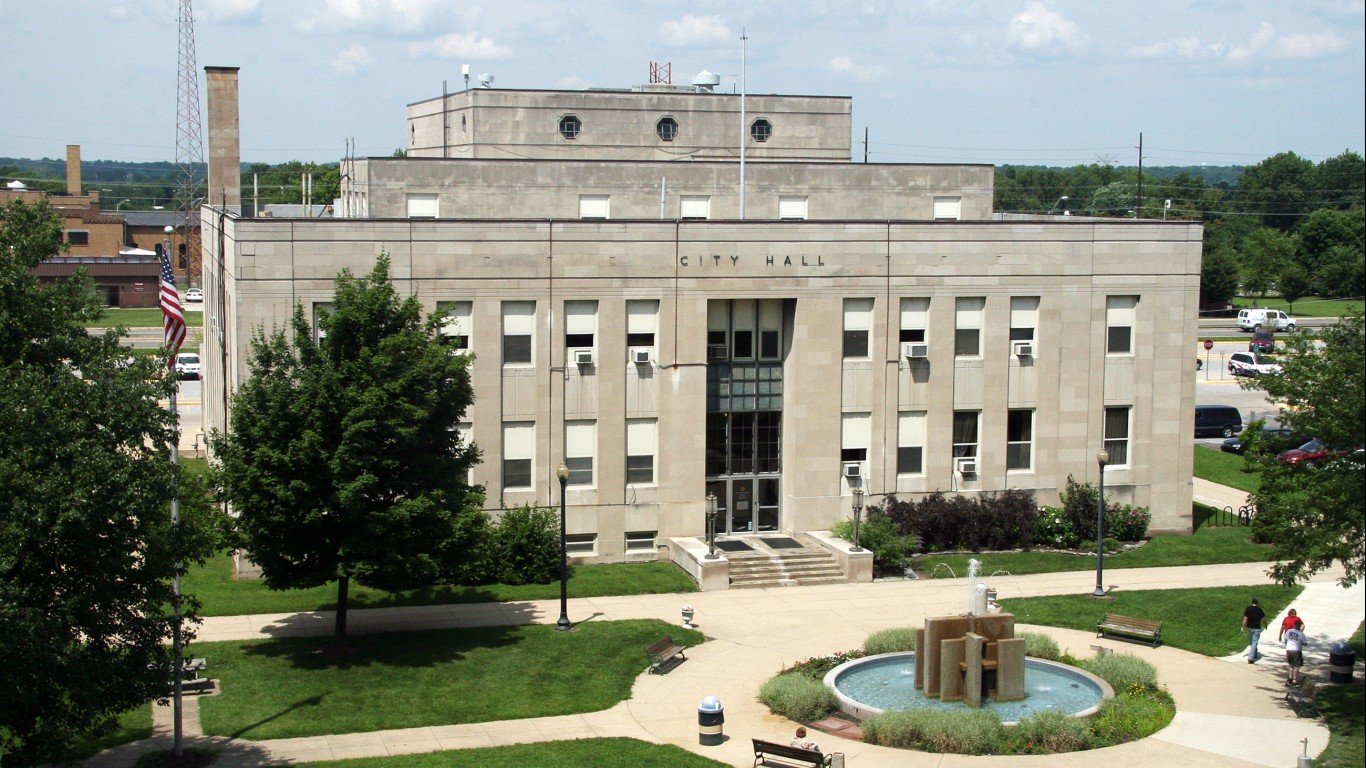
38. West Terre Haute, Indiana
> Adults with at least a bachelor’s degree: 3.8%
> Adults with at least a high school diploma or equivalent: 78.4% — 1,115th lowest of 10,738 towns (tied)
> Median household income: $34,286 — 990th lowest of 10,733 towns (tied)
> Estimated unemployment rate 2015-2019: 9.9% — 1,063rd highest of 10,738 towns (tied)
> Population: 2,185

37. Hartford, Michigan
> Adults with at least a bachelor’s degree: 3.7%
> Adults with at least a high school diploma or equivalent: 76.6% — 885th lowest of 10,738 towns (tied)
> Median household income: $36,228 — 1,275th lowest of 10,733 towns
> Estimated unemployment rate 2015-2019: 14.1% — 277th highest of 10,738 towns (tied)
> Population: 2,595
[in-text-ad-2]

36. East Porterville, California
> Adults with at least a bachelor’s degree: 3.7%
> Adults with at least a high school diploma or equivalent: 46.5% — 21st lowest of 10,738 towns
> Median household income: $27,974 — 323rd lowest of 10,733 towns
> Estimated unemployment rate 2015-2019: 22.4% — 29th highest of 10,738 towns (tied)
> Population: 6,291
35. Carlin, Nevada
> Adults with at least a bachelor’s degree: 3.7%
> Adults with at least a high school diploma or equivalent: 92.7% — 6,610th lowest of 10,738 towns (tied)
> Median household income: $78,929 — 8,179th lowest of 10,733 towns
> Estimated unemployment rate 2015-2019: 7.9% — 1,964th highest of 10,738 towns (tied)
> Population: 2,025
[in-text-ad]
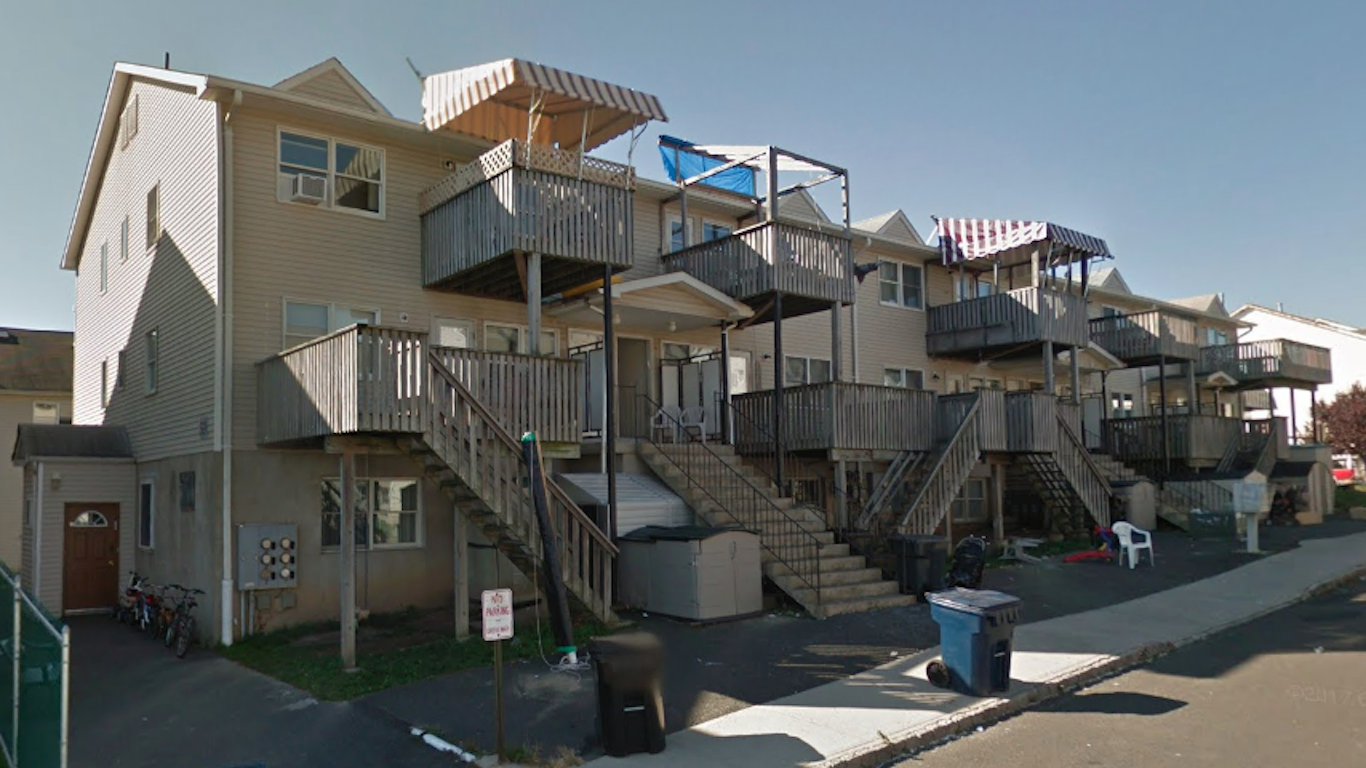
34. New Square, New York
> Adults with at least a bachelor’s degree: 3.7%
> Adults with at least a high school diploma or equivalent: 74.6% — 664th lowest of 10,738 towns (tied)
> Median household income: $23,730 — 100th lowest of 10,733 towns
> Estimated unemployment rate 2015-2019: 6.2% — 3,386th highest of 10,738 towns (tied)
> Population: 8,373

33. Vanceburg, Kentucky
> Adults with at least a bachelor’s degree: 3.7%
> Adults with at least a high school diploma or equivalent: 67.4% — 255th lowest of 10,738 towns (tied)
> Median household income: $17,197 — 9th lowest of 10,733 towns
> Estimated unemployment rate 2015-2019: 5.7% — 3,961st highest of 10,738 towns (tied)
> Population: 1,462

32. El Cenizo, Texas
> Adults with at least a bachelor’s degree: 3.7%
> Adults with at least a high school diploma or equivalent: 36.0% — 2nd lowest of 10,738 towns
> Median household income: $20,580 — 33rd lowest of 10,733 towns
> Estimated unemployment rate 2015-2019: 8.2% — 1,782nd highest of 10,738 towns (tied)
> Population: 3,221
[in-text-ad-2]
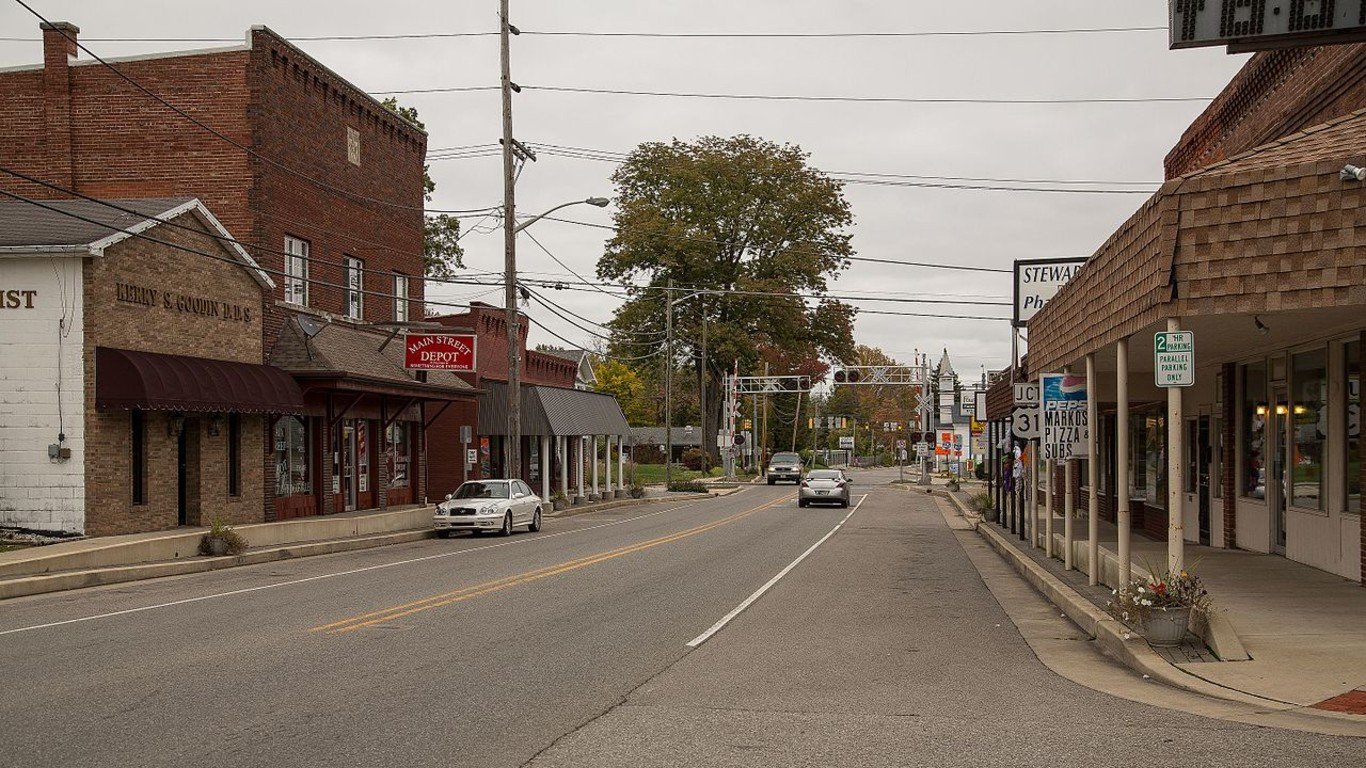
31. Austin, Indiana
> Adults with at least a bachelor’s degree: 3.6%
> Adults with at least a high school diploma or equivalent: 75.8% — 782nd lowest of 10,738 towns (tied)
> Median household income: $34,163 — 967th lowest of 10,733 towns
> Estimated unemployment rate 2015-2019: 6.4% — 3,174th highest of 10,738 towns (tied)
> Population: 3,725
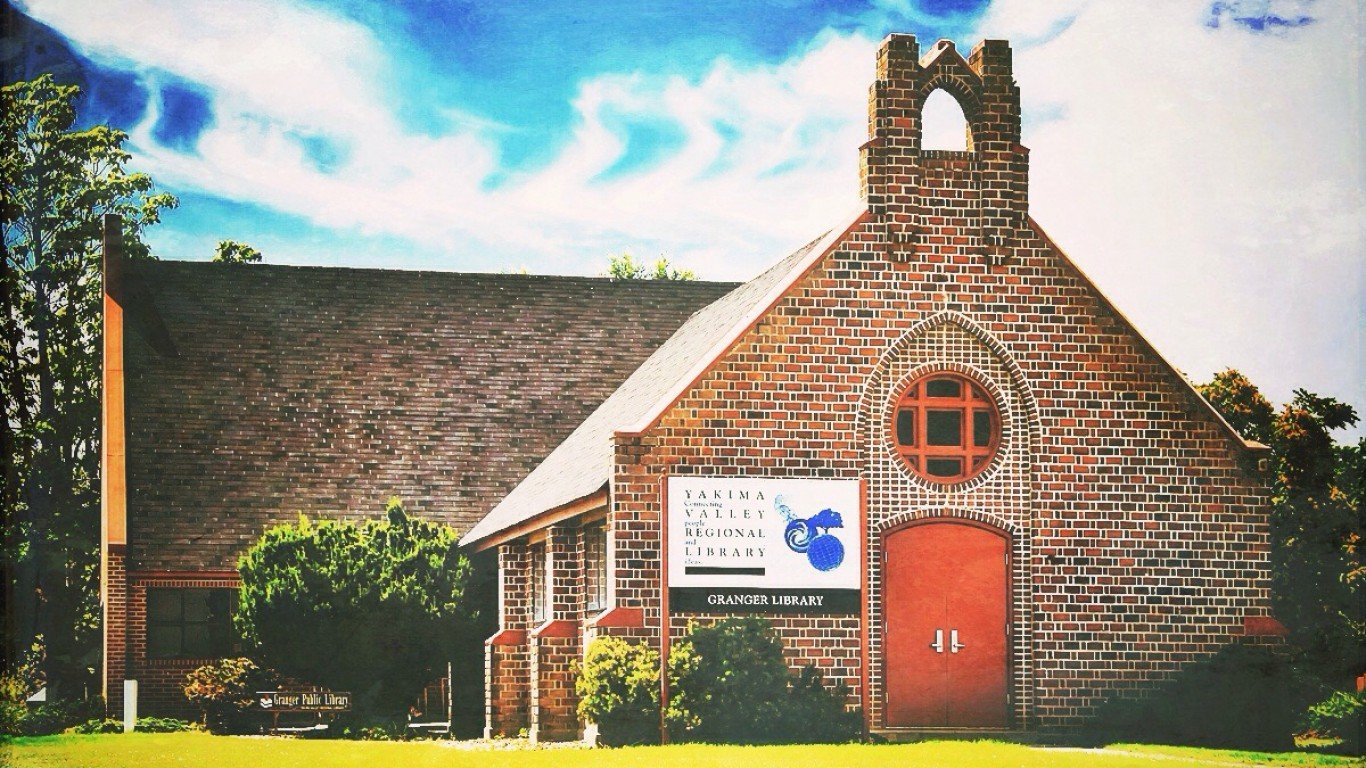
30. Granger, Washington
> Adults with at least a bachelor’s degree: 3.6%
> Adults with at least a high school diploma or equivalent: 50.0% — 28th lowest of 10,738 towns
> Median household income: $49,958 — 4,069th lowest of 10,733 towns
> Estimated unemployment rate 2015-2019: 16.8% — 132nd highest of 10,738 towns (tied)
> Population: 3,756
[in-text-ad]

29. Dannemora, New York
> Adults with at least a bachelor’s degree: 3.6%
> Adults with at least a high school diploma or equivalent: 77.5% — 1,005th lowest of 10,738 towns (tied)
> Median household income: $56,339 — 5,334th lowest of 10,733 towns
> Estimated unemployment rate 2015-2019: 8.4% — 1,667th highest of 10,738 towns (tied)
> Population: 3,958

28. Corcoran, California
> Adults with at least a bachelor’s degree: 3.6%
> Adults with at least a high school diploma or equivalent: 57.7% — 76th lowest of 10,738 towns (tied)
> Median household income: $40,159 — 1,961st lowest of 10,733 towns
> Estimated unemployment rate 2015-2019: 11.6% — 611th highest of 10,738 towns (tied)
> Population: 22,156
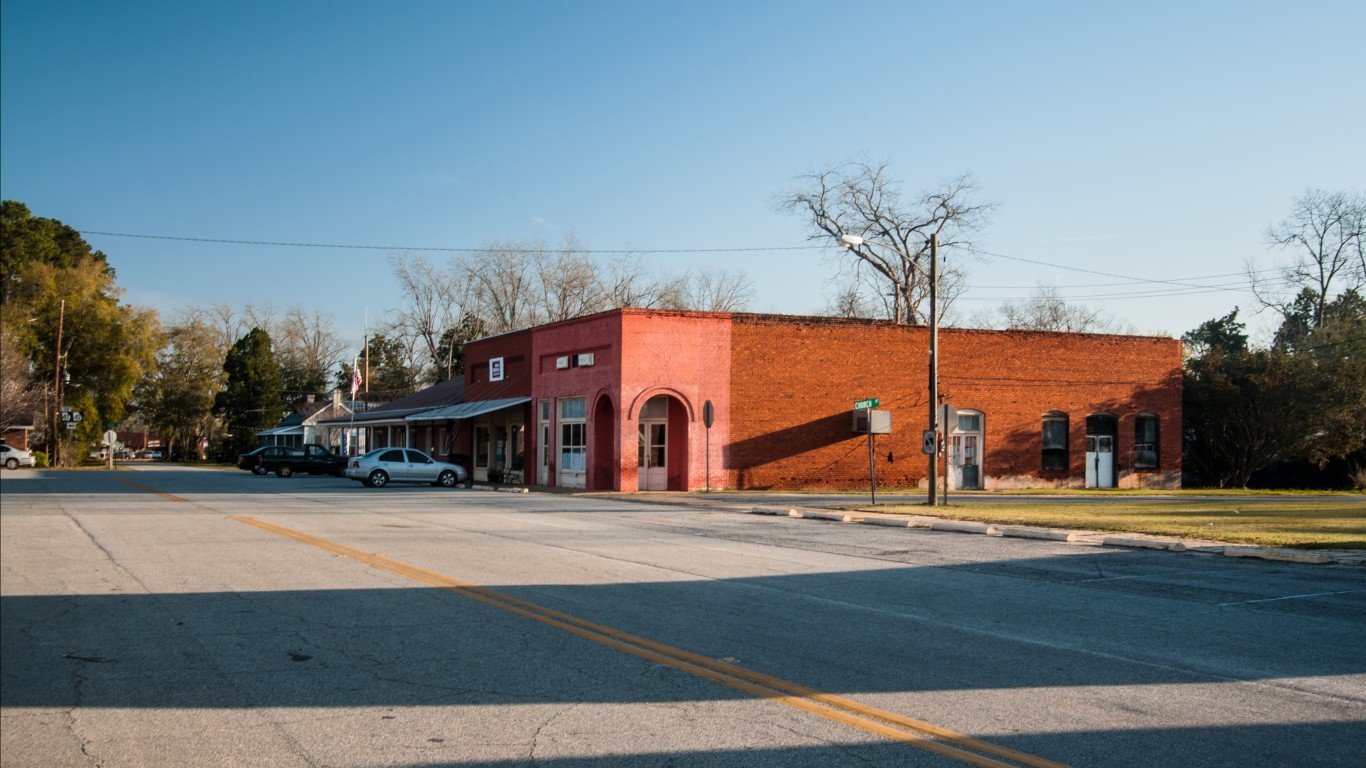
27. Morgan, Georgia
> Adults with at least a bachelor’s degree: 3.5%
> Adults with at least a high school diploma or equivalent: 63.8% — 163rd lowest of 10,738 towns (tied)
> Median household income: $25,469 — 173rd lowest of 10,733 towns
> Estimated unemployment rate 2015-2019: 1.7% — 9,717th highest of 10,738 towns (tied)
> Population: 2,057
[in-text-ad-2]

26. Good Hope, California
> Adults with at least a bachelor’s degree: 3.4%
> Adults with at least a high school diploma or equivalent: 51.6% — 37th lowest of 10,738 towns
> Median household income: $47,927 — 3,635th lowest of 10,733 towns (tied)
> Estimated unemployment rate 2015-2019: 11.3% — 676th highest of 10,738 towns (tied)
> Population: 9,195
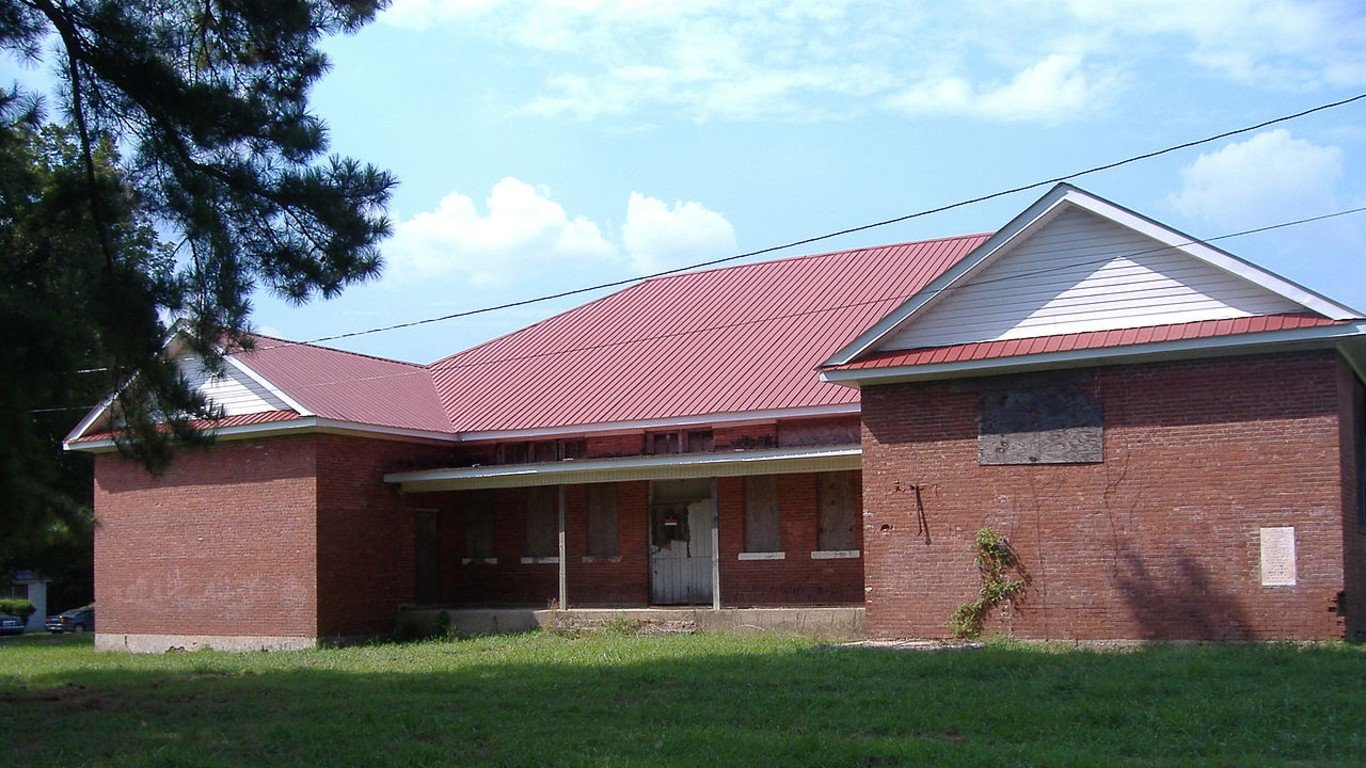
25. Whiteville, Tennessee
> Adults with at least a bachelor’s degree: 3.4%
> Adults with at least a high school diploma or equivalent: 68.5% — 288th lowest of 10,738 towns (tied)
> Median household income: $36,094 — 1,255th lowest of 10,733 towns
> Estimated unemployment rate 2015-2019: 5.6% — 4,069th highest of 10,738 towns (tied)
> Population: 4,501
[in-text-ad]
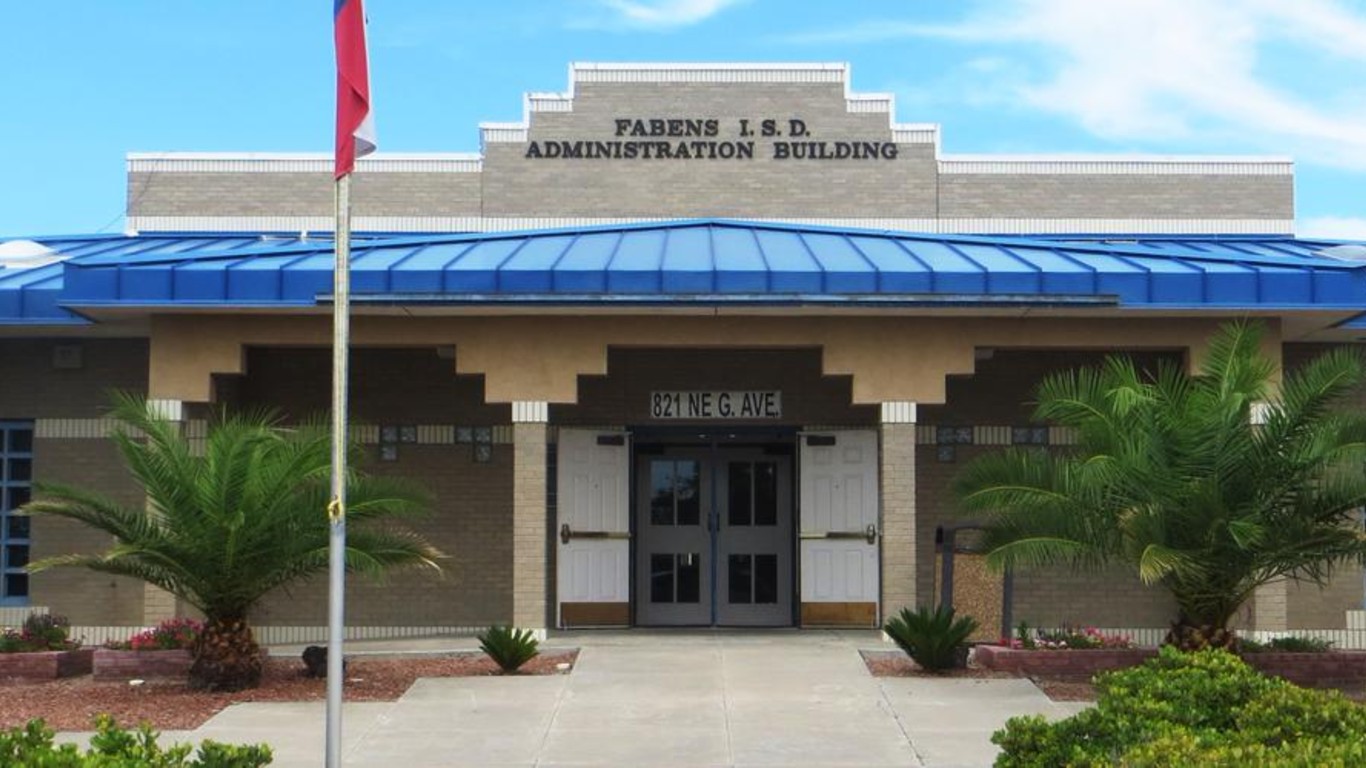
24. Fabens, Texas
> Adults with at least a bachelor’s degree: 3.4%
> Adults with at least a high school diploma or equivalent: 50.3% — 30th lowest of 10,738 towns
> Median household income: $28,397 — 343rd lowest of 10,733 towns
> Estimated unemployment rate 2015-2019: 8.5% — 1,621st highest of 10,738 towns (tied)
> Population: 5,736
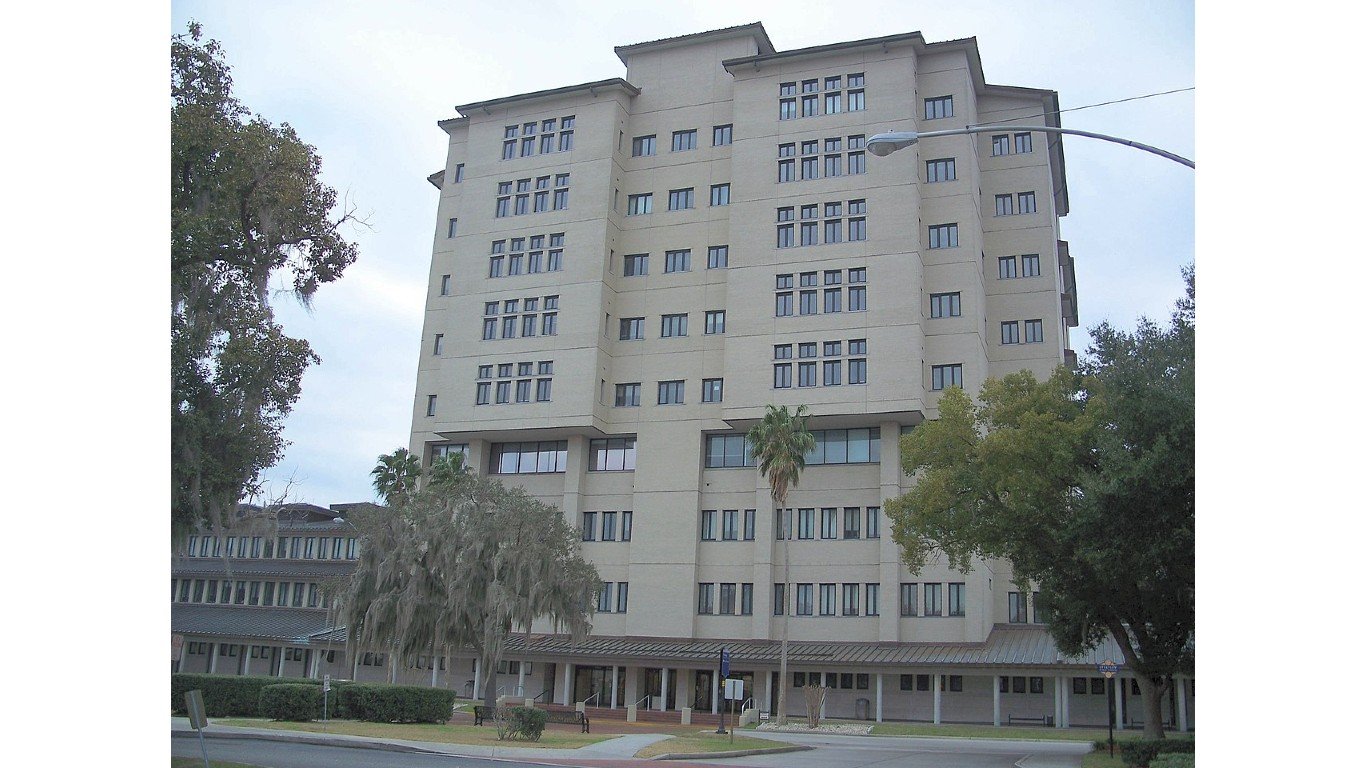
23. Combee Settlement, Florida
> Adults with at least a bachelor’s degree: 3.4%
> Adults with at least a high school diploma or equivalent: 70.8% — 383rd lowest of 10,738 towns (tied)
> Median household income: $36,832 — 1,380th lowest of 10,733 towns
> Estimated unemployment rate 2015-2019: 7.6% — 2,164th highest of 10,738 towns (tied)
> Population: 6,357

22. McFarland, California
> Adults with at least a bachelor’s degree: 3.4%
> Adults with at least a high school diploma or equivalent: 51.9% — 38th lowest of 10,738 towns
> Median household income: $35,346 — 1,142nd lowest of 10,733 towns
> Estimated unemployment rate 2015-2019: 13.4% — 326th highest of 10,738 towns (tied)
> Population: 14,823
[in-text-ad-2]
21. Wilder, Idaho
> Adults with at least a bachelor’s degree: 3.3%
> Adults with at least a high school diploma or equivalent: 56.2% — 64th lowest of 10,738 towns (tied)
> Median household income: $39,696 — 1,847th lowest of 10,733 towns (tied)
> Estimated unemployment rate 2015-2019: 2.5% — 8,745th highest of 10,738 towns (tied)
> Population: 1,770
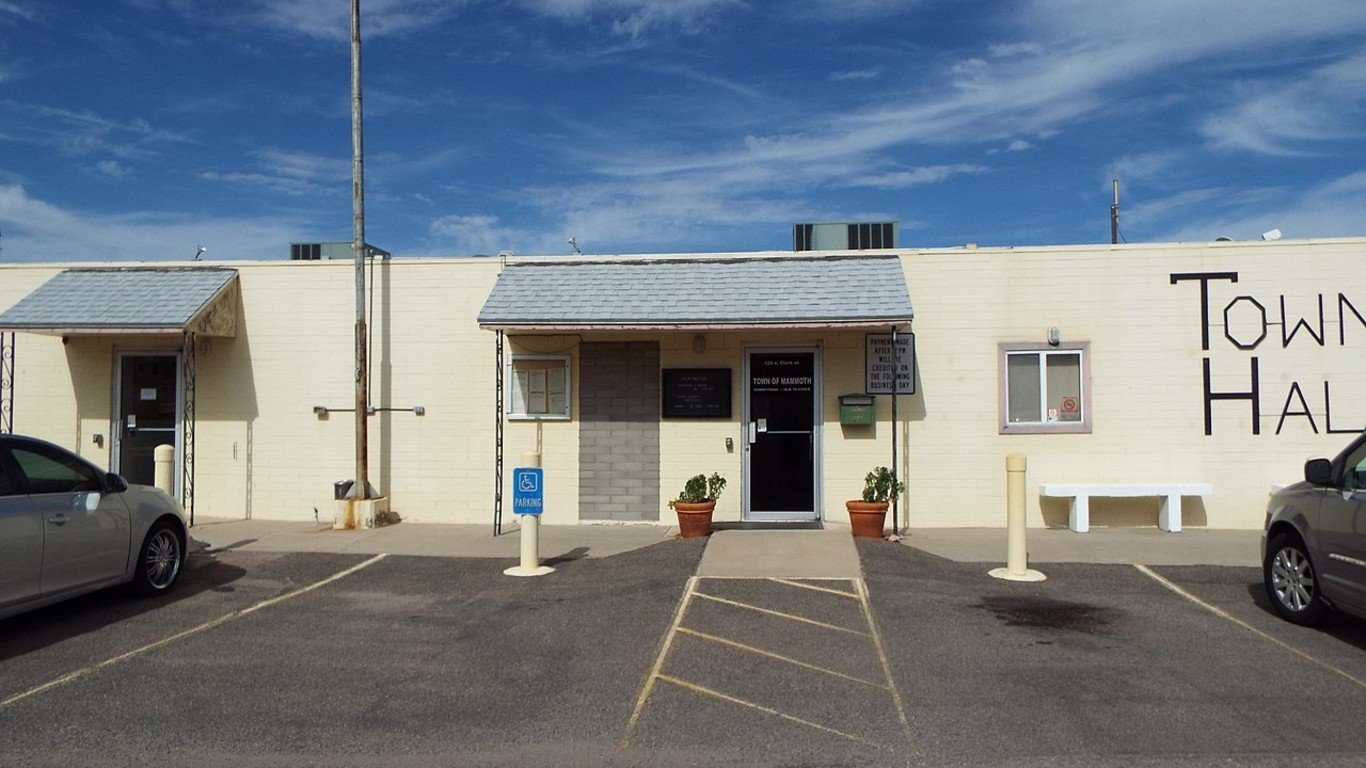
20. Mammoth, Arizona
> Adults with at least a bachelor’s degree: 3.3%
> Adults with at least a high school diploma or equivalent: 70.6% — 373rd lowest of 10,738 towns (tied)
> Median household income: $38,576 — 1,647th lowest of 10,733 towns
> Estimated unemployment rate 2015-2019: 7.9% — 1,964th highest of 10,738 towns (tied)
> Population: 1,653
[in-text-ad]
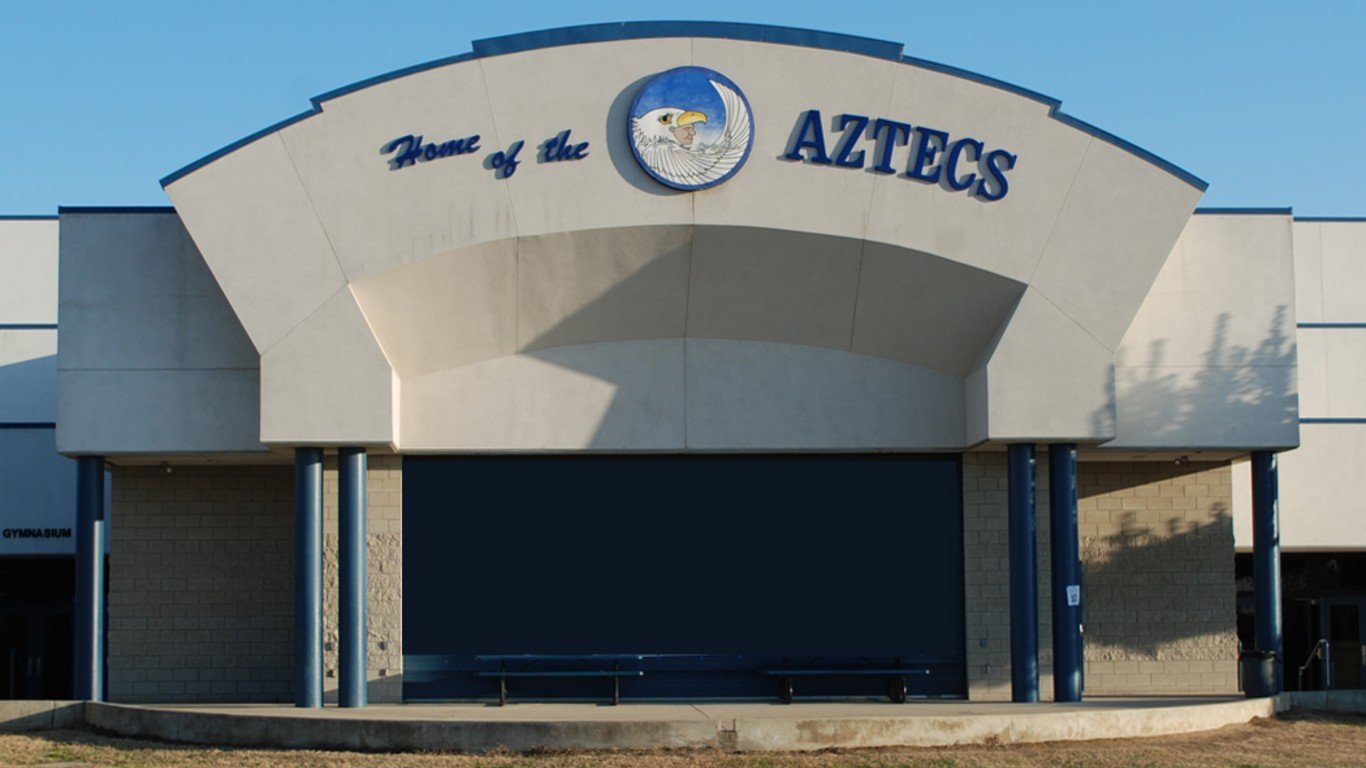
19. Farmersville, California
> Adults with at least a bachelor’s degree: 3.3%
> Adults with at least a high school diploma or equivalent: 59.3% — 93rd lowest of 10,738 towns (tied)
> Median household income: $39,720 — 1,854th lowest of 10,733 towns
> Estimated unemployment rate 2015-2019: 12.5% — 439th highest of 10,738 towns (tied)
> Population: 10,716
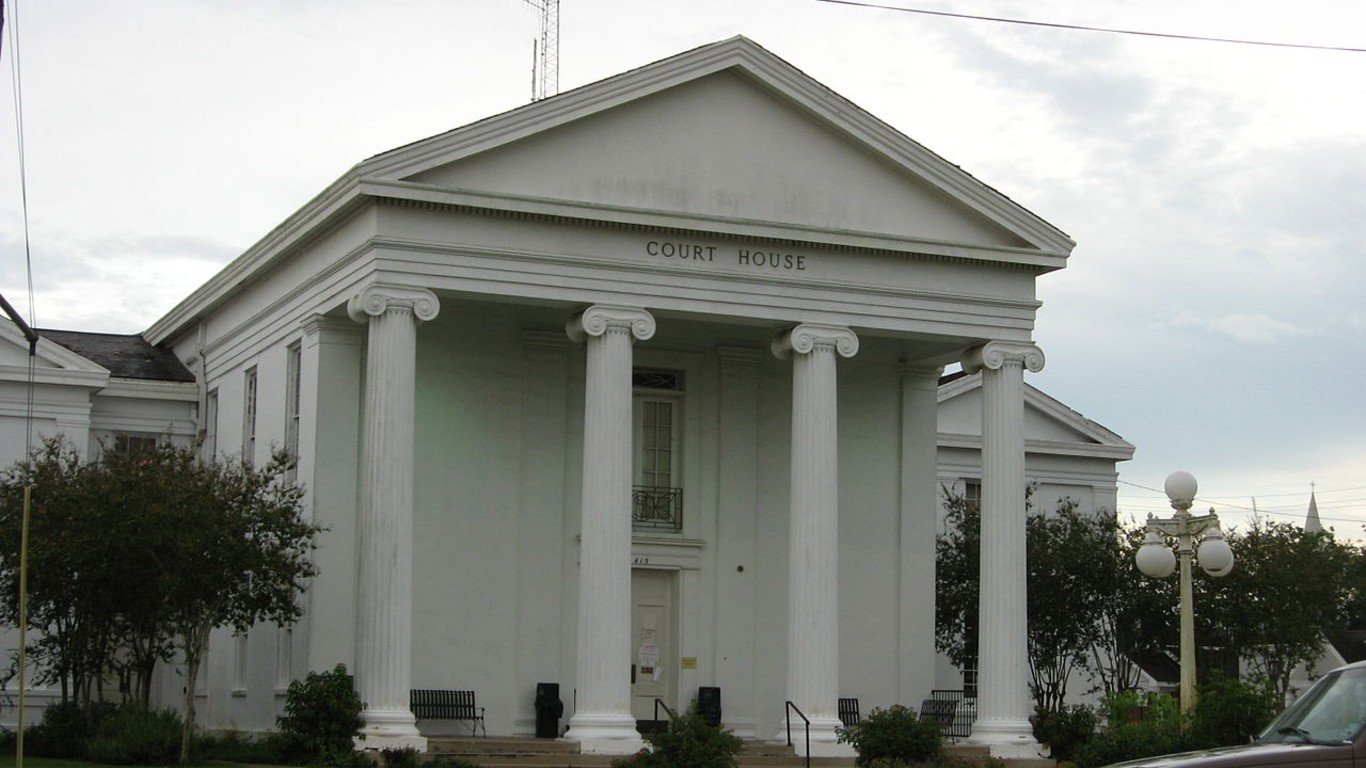
18. Henderson, Louisiana
> Adults with at least a bachelor’s degree: 3.2%
> Adults with at least a high school diploma or equivalent: 53.5% — 45th lowest of 10,738 towns
> Median household income: $32,973 — 813th lowest of 10,733 towns
> Estimated unemployment rate 2015-2019: 6.4% — 3,174th highest of 10,738 towns (tied)
> Population: 1,990
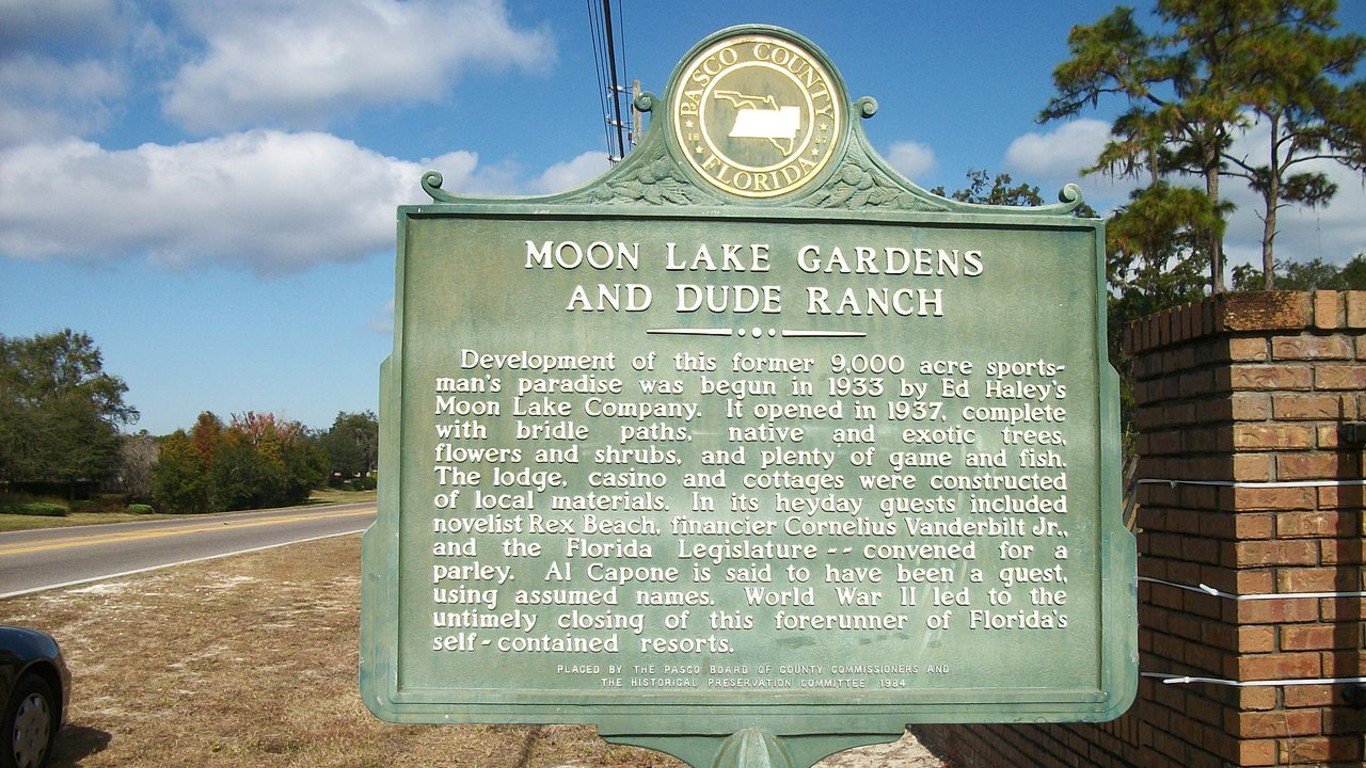
17. Moon Lake, Florida
> Adults with at least a bachelor’s degree: 3.2%
> Adults with at least a high school diploma or equivalent: 73.5% — 575th lowest of 10,738 towns (tied)
> Median household income: $35,469 — 1,160th lowest of 10,733 towns (tied)
> Estimated unemployment rate 2015-2019: 8.9% — 1,414th highest of 10,738 towns (tied)
> Population: 4,312
[in-text-ad-2]
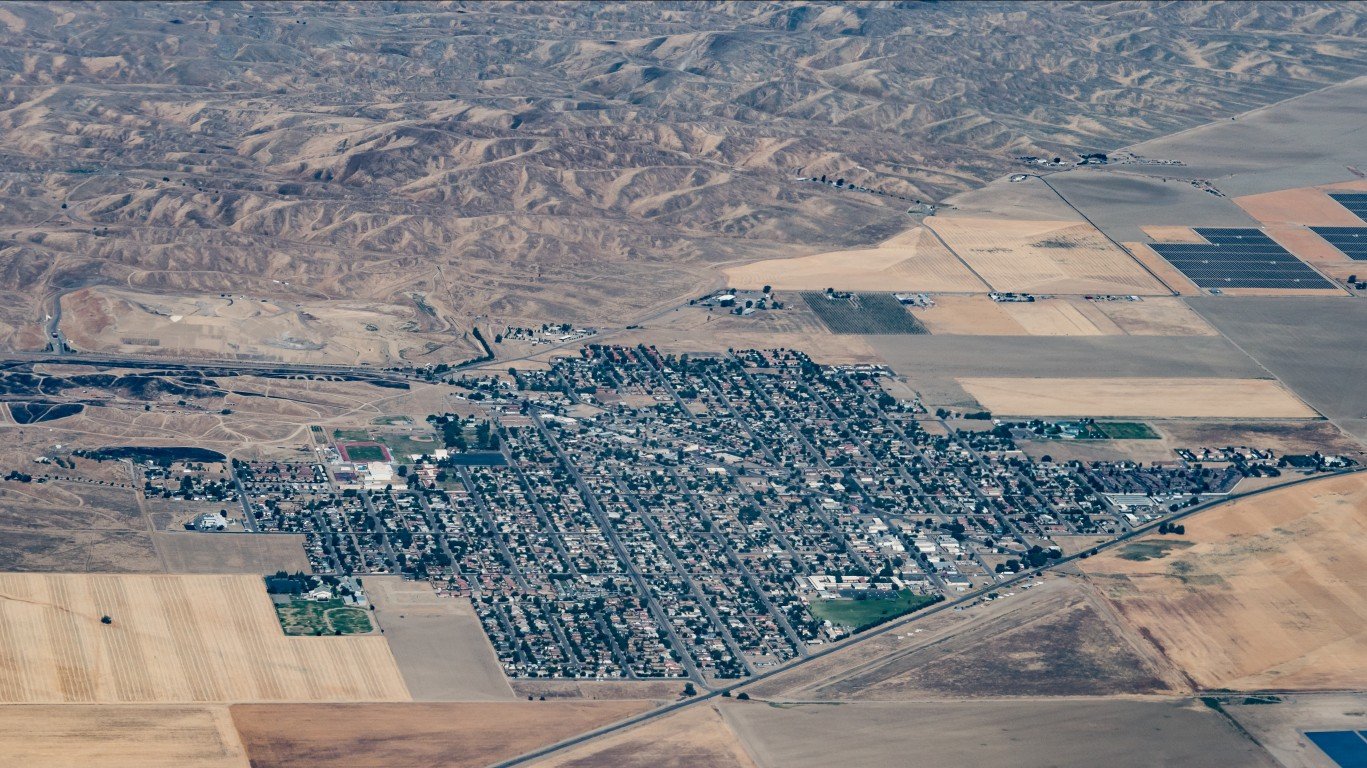
16. Avenal, California
> Adults with at least a bachelor’s degree: 3.2%
> Adults with at least a high school diploma or equivalent: 45.6% — 17th lowest of 10,738 towns
> Median household income: $41,114 — 2,140th lowest of 10,733 towns
> Estimated unemployment rate 2015-2019: 12.5% — 439th highest of 10,738 towns (tied)
> Population: 12,961
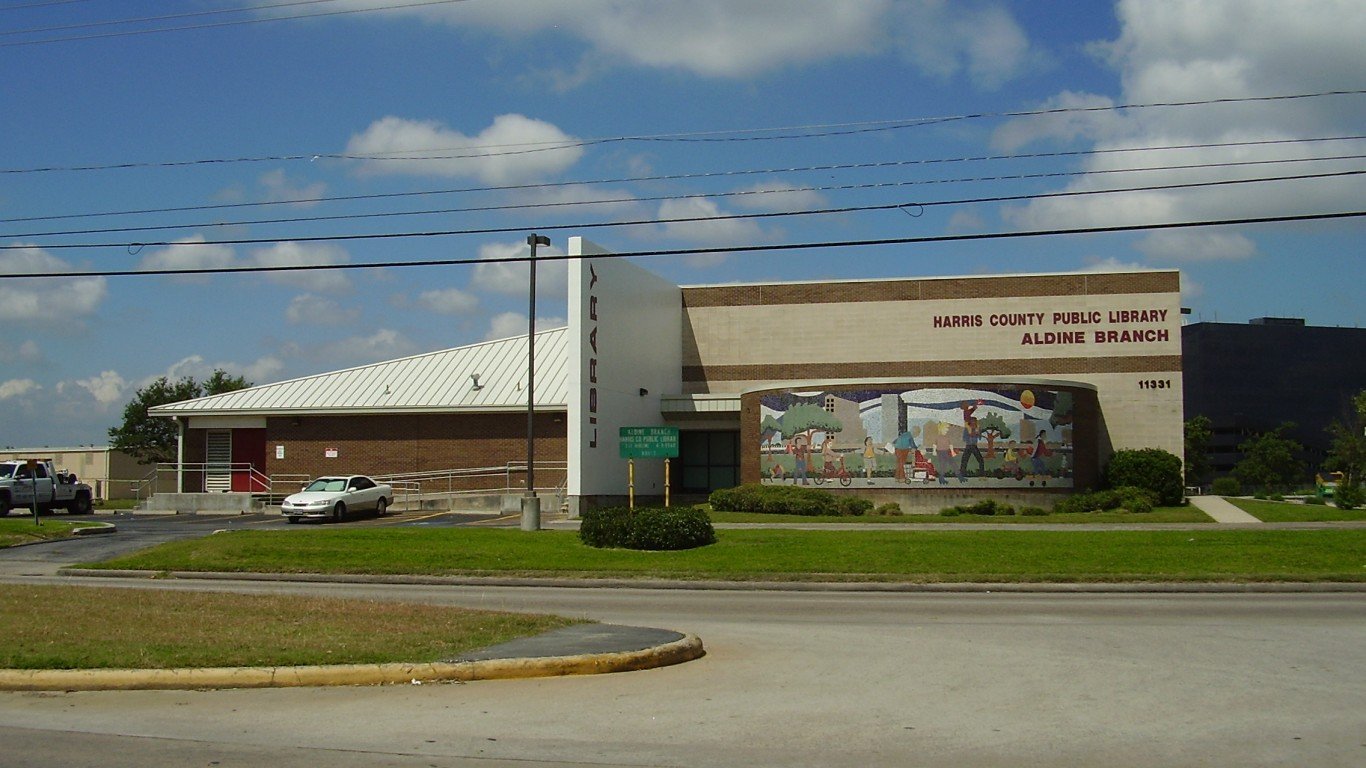
15. Aldine, Texas
> Adults with at least a bachelor’s degree: 3.1%
> Adults with at least a high school diploma or equivalent: 46.4% — 20th lowest of 10,738 towns
> Median household income: $38,925 — 1,705th lowest of 10,733 towns
> Estimated unemployment rate 2015-2019: 3.0% — 8,008th highest of 10,738 towns (tied)
> Population: 15,318
[in-text-ad]
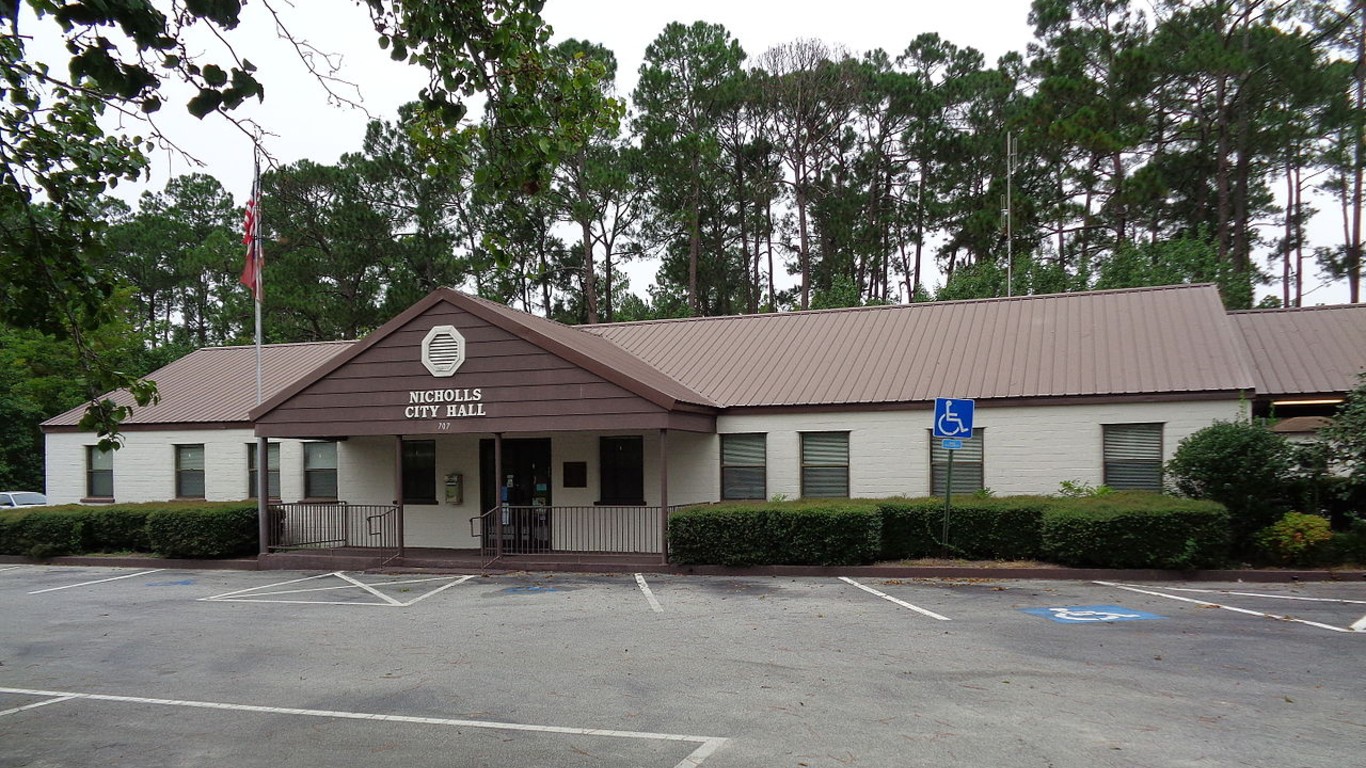
14. Nicholls, Georgia
> Adults with at least a bachelor’s degree: 3.1%
> Adults with at least a high school diploma or equivalent: 66.1% — 217th lowest of 10,738 towns (tied)
> Median household income: $27,563 — 298th lowest of 10,733 towns
> Estimated unemployment rate 2015-2019: 8.3% — 1,713th highest of 10,738 towns (tied)
> Population: 3,836
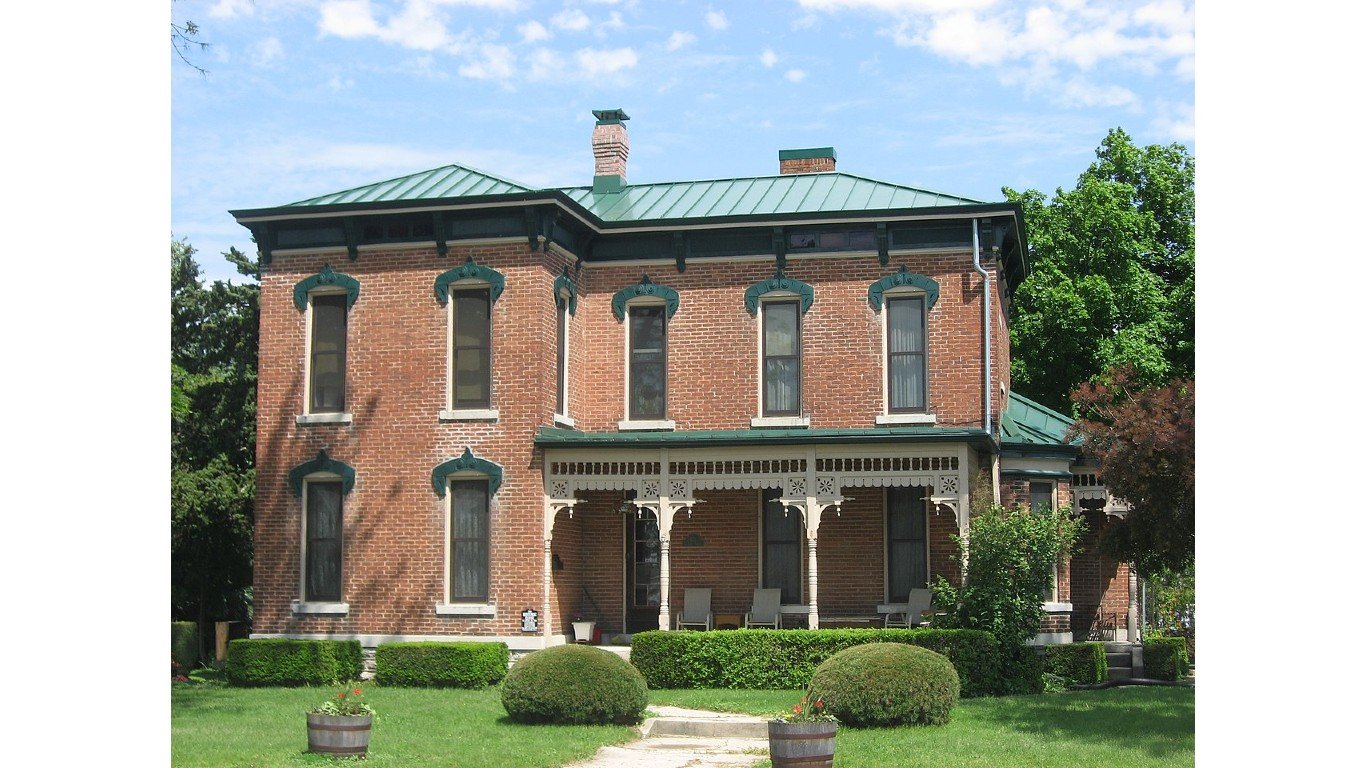
13. Union City, Ohio
> Adults with at least a bachelor’s degree: 2.9%
> Adults with at least a high school diploma or equivalent: 81.3% — 1,637th lowest of 10,738 towns (tied)
> Median household income: $31,000 — 553rd lowest of 10,733 towns
> Estimated unemployment rate 2015-2019: 10.2% — 963rd highest of 10,738 towns (tied)
> Population: 1,701
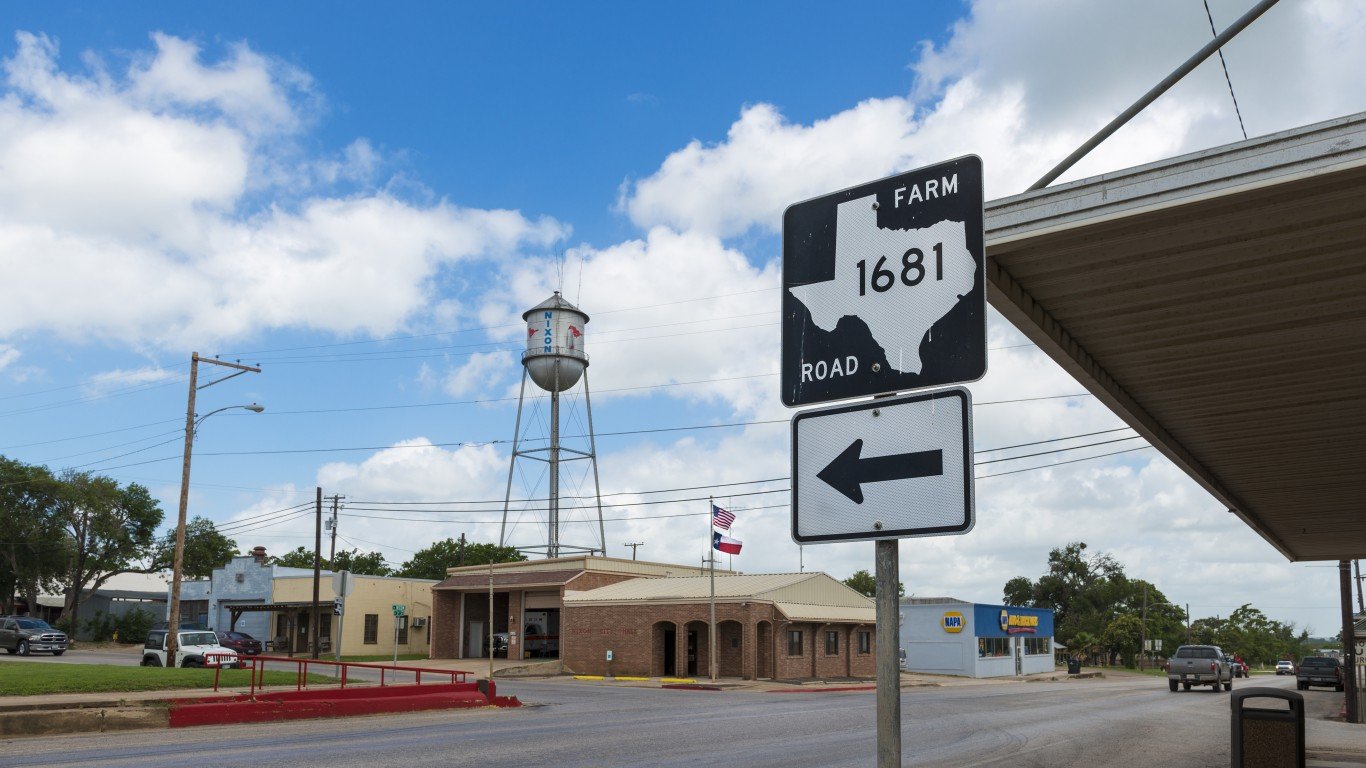
12. Nixon, Texas
> Adults with at least a bachelor’s degree: 2.8%
> Adults with at least a high school diploma or equivalent: 60.2% — 107th lowest of 10,738 towns (tied)
> Median household income: $57,460 — 5,536th lowest of 10,733 towns
> Estimated unemployment rate 2015-2019: 3.2% — 7,657th highest of 10,738 towns (tied)
> Population: 2,510
[in-text-ad-2]

11. Lamont, California
> Adults with at least a bachelor’s degree: 2.8%
> Adults with at least a high school diploma or equivalent: 37.3% — 5th lowest of 10,738 towns
> Median household income: $43,297 — 2,630th lowest of 10,733 towns
> Estimated unemployment rate 2015-2019: 8.9% — 1,414th highest of 10,738 towns (tied)
> Population: 14,799
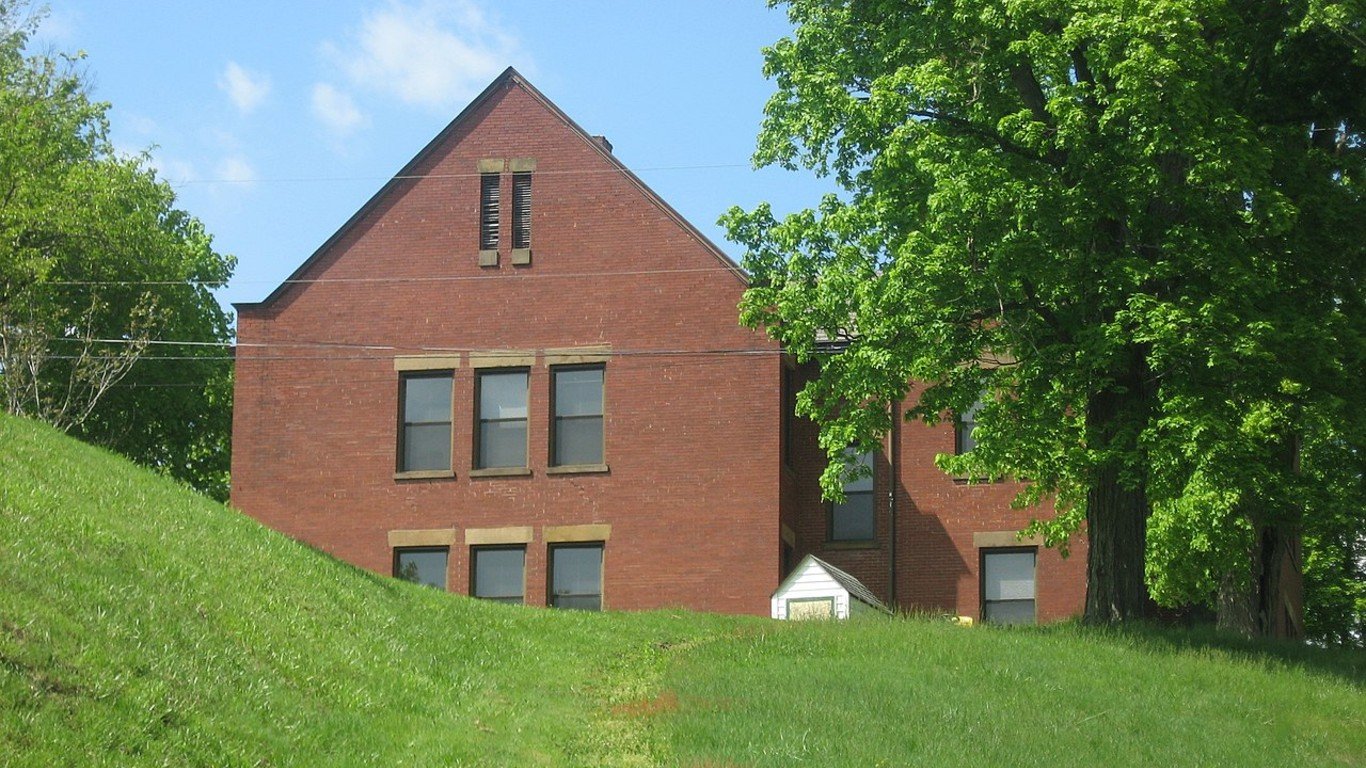
10. Crooksville, Ohio
> Adults with at least a bachelor’s degree: 2.7%
> Adults with at least a high school diploma or equivalent: 88.8% — 4,226th lowest of 10,738 towns (tied)
> Median household income: $30,463 — 493rd lowest of 10,733 towns
> Estimated unemployment rate 2015-2019: 12.3% — 474th highest of 10,738 towns (tied)
> Population: 2,556
[in-text-ad]
9. McColl, South Carolina
> Adults with at least a bachelor’s degree: 2.6%
> Adults with at least a high school diploma or equivalent: 78.6% — 1,148th lowest of 10,738 towns (tied)
> Median household income: $30,600 — 509th lowest of 10,733 towns (tied)
> Estimated unemployment rate 2015-2019: 9.2% — 1,291st highest of 10,738 towns (tied)
> Population: 2,038
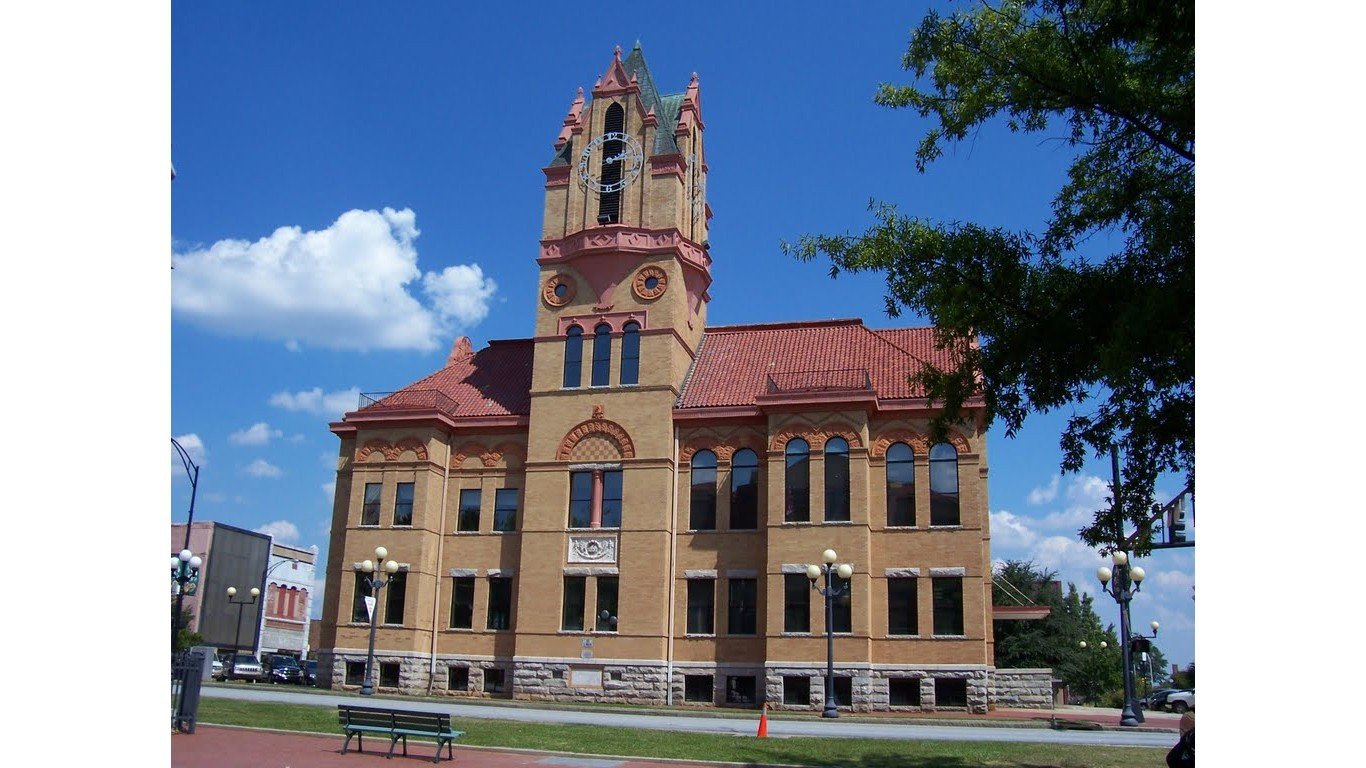
8. Homeland Park, South Carolina
> Adults with at least a bachelor’s degree: 2.4%
> Adults with at least a high school diploma or equivalent: 71.1% — 407th lowest of 10,738 towns (tied)
> Median household income: $30,399 — 480th lowest of 10,733 towns
> Estimated unemployment rate 2015-2019: 9.7% — 1,132nd highest of 10,738 towns (tied)
> Population: 5,988

7. Garden Acres, California
> Adults with at least a bachelor’s degree: 2.3%
> Adults with at least a high school diploma or equivalent: 48.7% — 25th lowest of 10,738 towns
> Median household income: $41,385 — 2,203rd lowest of 10,733 towns
> Estimated unemployment rate 2015-2019: 11.9% — 559th highest of 10,738 towns (tied)
> Population: 9,972
[in-text-ad-2]
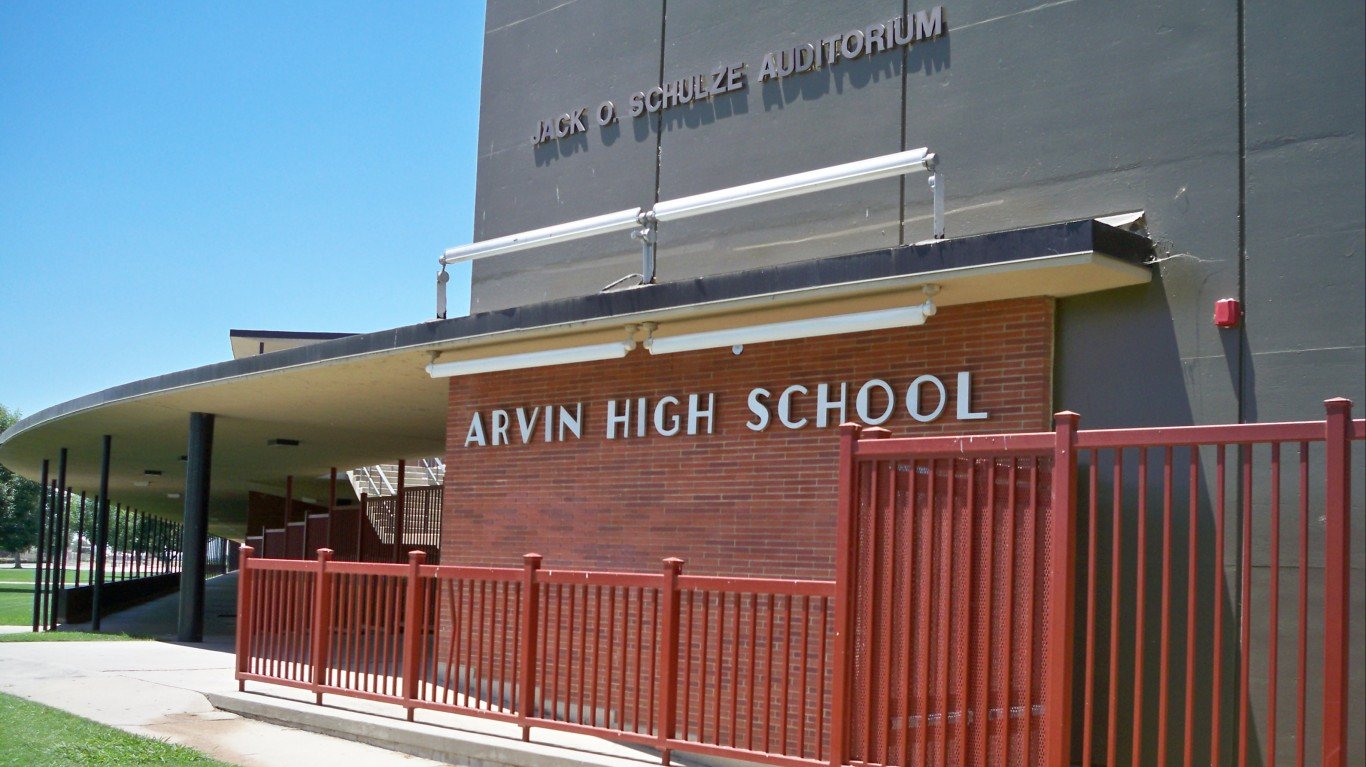
6. Arvin, California
> Adults with at least a bachelor’s degree: 1.9%
> Adults with at least a high school diploma or equivalent: 37.0% — 3rd lowest of 10,738 towns
> Median household income: $38,464 — 1,623rd lowest of 10,733 towns
> Estimated unemployment rate 2015-2019: 9.5% — 1,188th highest of 10,738 towns (tied)
> Population: 21,249
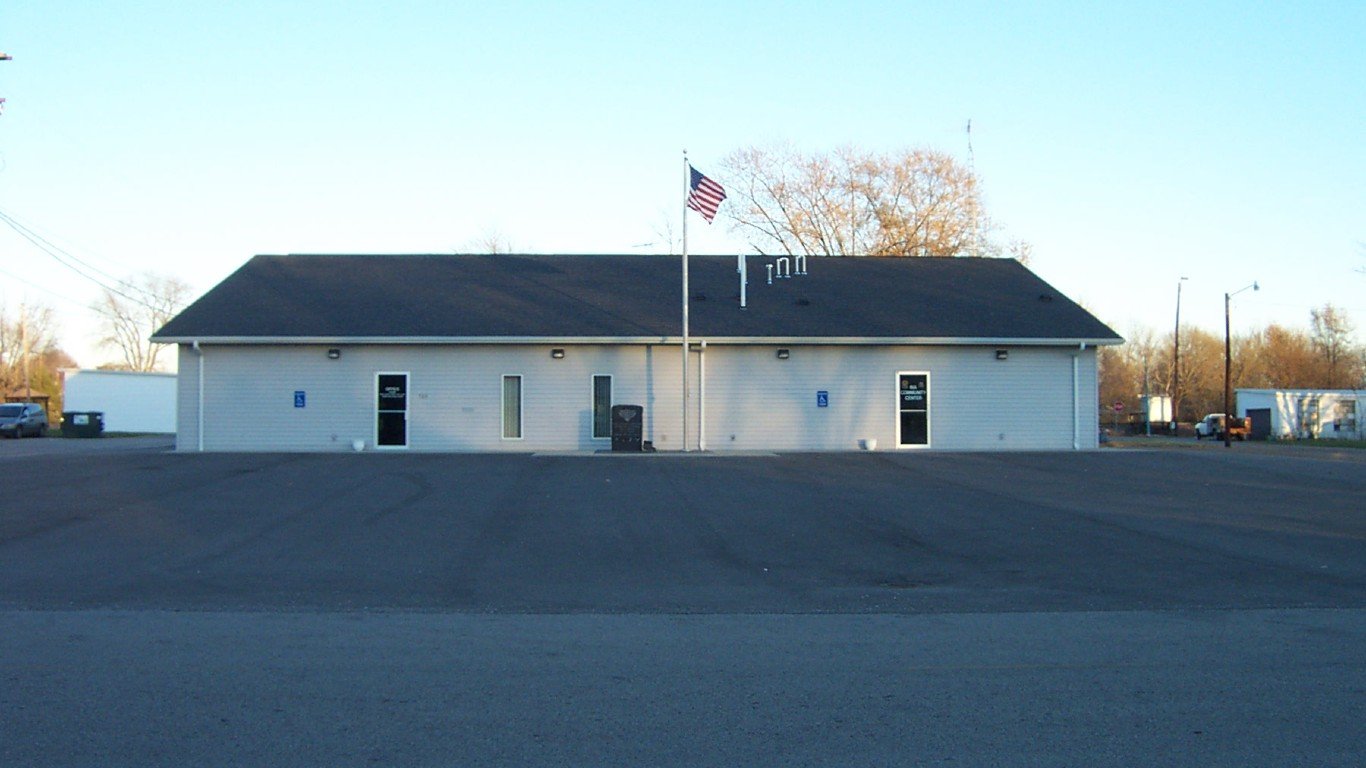
5. Ina, Illinois
> Adults with at least a bachelor’s degree: 1.9%
> Adults with at least a high school diploma or equivalent: 60.5% — 110th lowest of 10,738 towns (tied)
> Median household income: $40,455 — 2,024th lowest of 10,733 towns (tied)
> Estimated unemployment rate 2015-2019: 7.0% — 2,604th highest of 10,738 towns (tied)
> Population: 2,410
[in-text-ad]

4. Second Mesa, Arizona
> Adults with at least a bachelor’s degree: 1.7%
> Adults with at least a high school diploma or equivalent: 84.8% — 2,588th lowest of 10,738 towns (tied)
> Median household income: $36,563 — 1,334th lowest of 10,733 towns
> Estimated unemployment rate 2015-2019: 9.7% — 1,132nd highest of 10,738 towns (tied)
> Population: 1,823
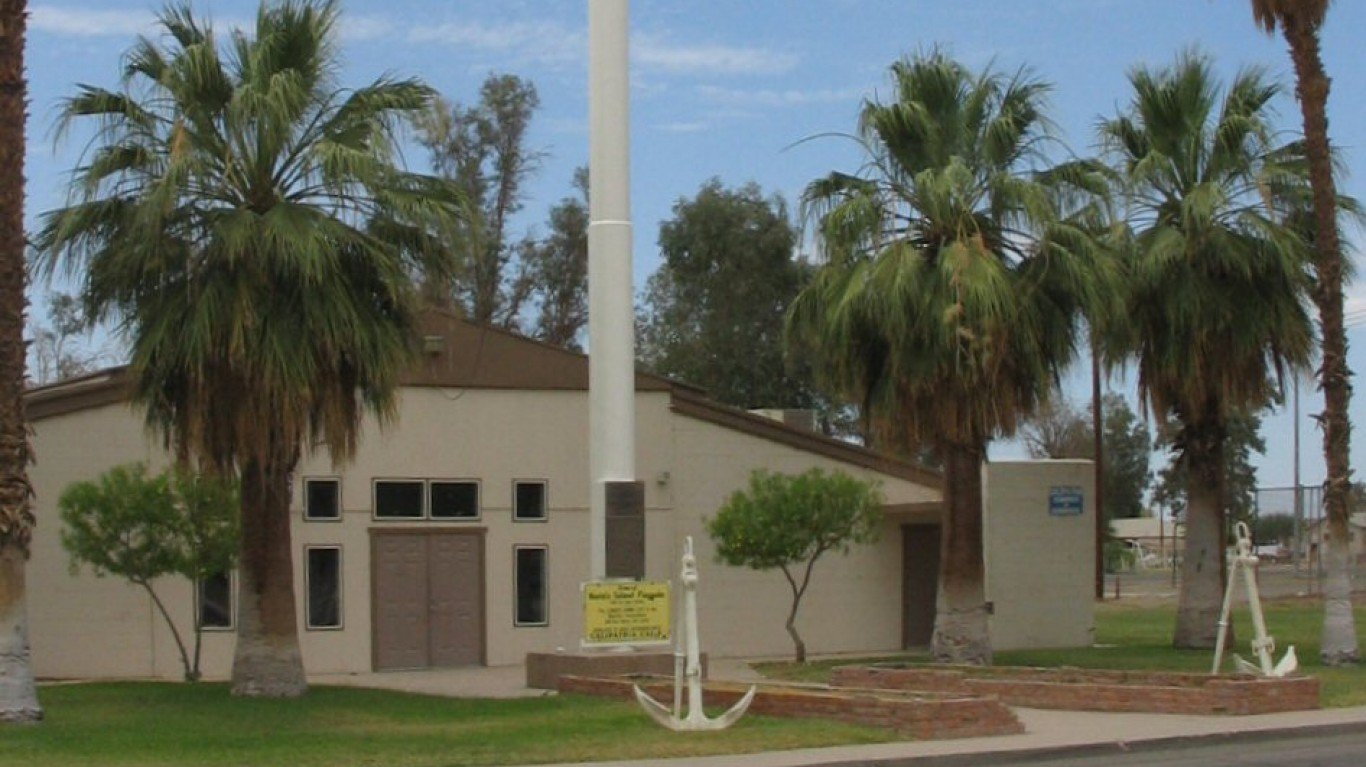
3. Calipatria, California
> Adults with at least a bachelor’s degree: 1.6%
> Adults with at least a high school diploma or equivalent: 60.8% — 112th lowest of 10,738 towns (tied)
> Median household income: $36,883 — 1,395th lowest of 10,733 towns
> Estimated unemployment rate 2015-2019: 20.4% — 47th highest of 10,738 towns (tied)
> Population: 7,395
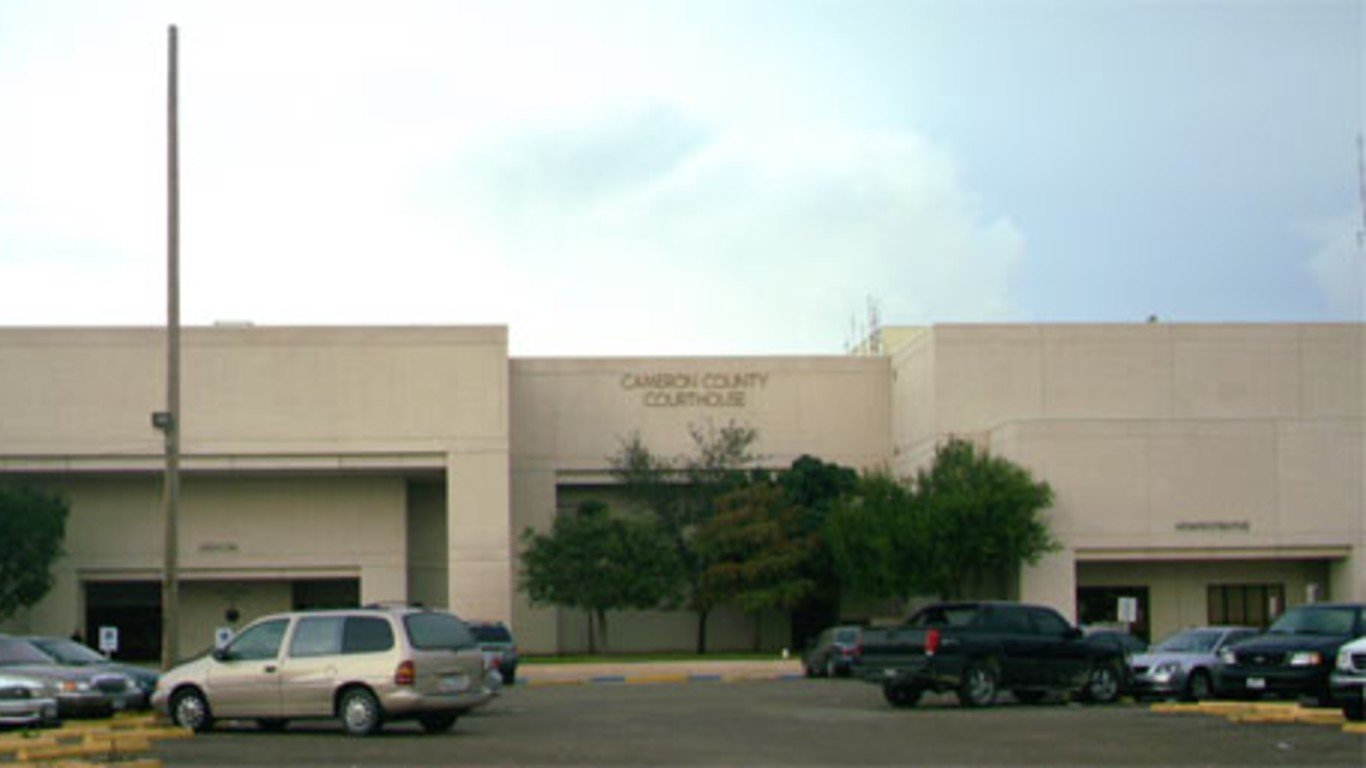
2. Laguna Heights, Texas
> Adults with at least a bachelor’s degree: 0.0% reported
> Adults with at least a high school diploma or equivalent: 51.1% — 35th lowest of 10,738 towns
> Median household income: $24,116 — 114th lowest of 10,733 towns
> Estimated unemployment rate 2015-2019: 0.0% reported — 10,598th highest of 10,738 towns (tied)
> Population: 2,090
[in-text-ad-2]

1. Cactus, Texas
> Adults with at least a bachelor’s degree: 0.0% reported
> Adults with at least a high school diploma or equivalent: 27.3% — 1st lowest of 10,738 towns
> Median household income: $40,417 — 2,011th lowest of 10,733 towns (tied)
> Estimated unemployment rate 2015-2019: 0.5% — 10,502nd highest of 10,738 towns (tied)
> Population: 3,245
Methodology
To determine America’s least educated towns, 24/7 Wall St. reviewed five-year estimates of the percentage of adults 25 years and over with at least a bachelor’s degree in U.S. towns from the U.S. Census Bureau’s 2019 American Community Survey.
We used census “place” geographies — a category that includes 29,573 incorporated legal entities and census-designated statistical entities. We only considered the 29,320 places that had boundaries that fell within one of the 50 states or the District of Columbia.
We defined towns based on population thresholds — having at least 1,000 people and less than 25,000 people — and 13,332 of the places fell within these thresholds.
Towns were then excluded if bachelor’s degree or higher attainment rates were not available in the 2019 ACS, if the town’s 25 and older population was less than 1,000, or if the sampling error associated with a town’s data was deemed too high.
The sampling error was defined as too high if the coefficient of variation — a statistical assessment of how reliable an estimate is — for a town’s bachelor’s or higher attainment rate was above 15% and greater than two standard deviations above the mean CV for all towns’ bachelor’s or higher attainment rate. We similarly excluded towns that had a sampling error too high for their 25 and over population estimates, using the same definition.
The remaining 10,738 places were ranked based on the share of adults 25 years and over with at least a bachelor’s degree. To break ties, we used the percentage of adults 25 and over who have completed at least high school or its equivalent.
Additional information on the share of adults 25 years and over who have completed at least high school or its equivalent, median household income, unemployment rates for the 16 and older population in the civilian labor force, and population figures are also five-year estimates from the 2019 ACS.
Take This Retirement Quiz To Get Matched With A Financial Advisor (Sponsored)
Take the quiz below to get matched with a financial advisor today.
Each advisor has been vetted by SmartAsset and is held to a fiduciary standard to act in your best interests.
Here’s how it works:
1. Answer SmartAsset advisor match quiz
2. Review your pre-screened matches at your leisure. Check out the
advisors’ profiles.
3. Speak with advisors at no cost to you. Have an introductory call on the phone or introduction in person and choose whom to work with in the future
Take the retirement quiz right here.
Thank you for reading! Have some feedback for us?
Contact the 24/7 Wall St. editorial team.
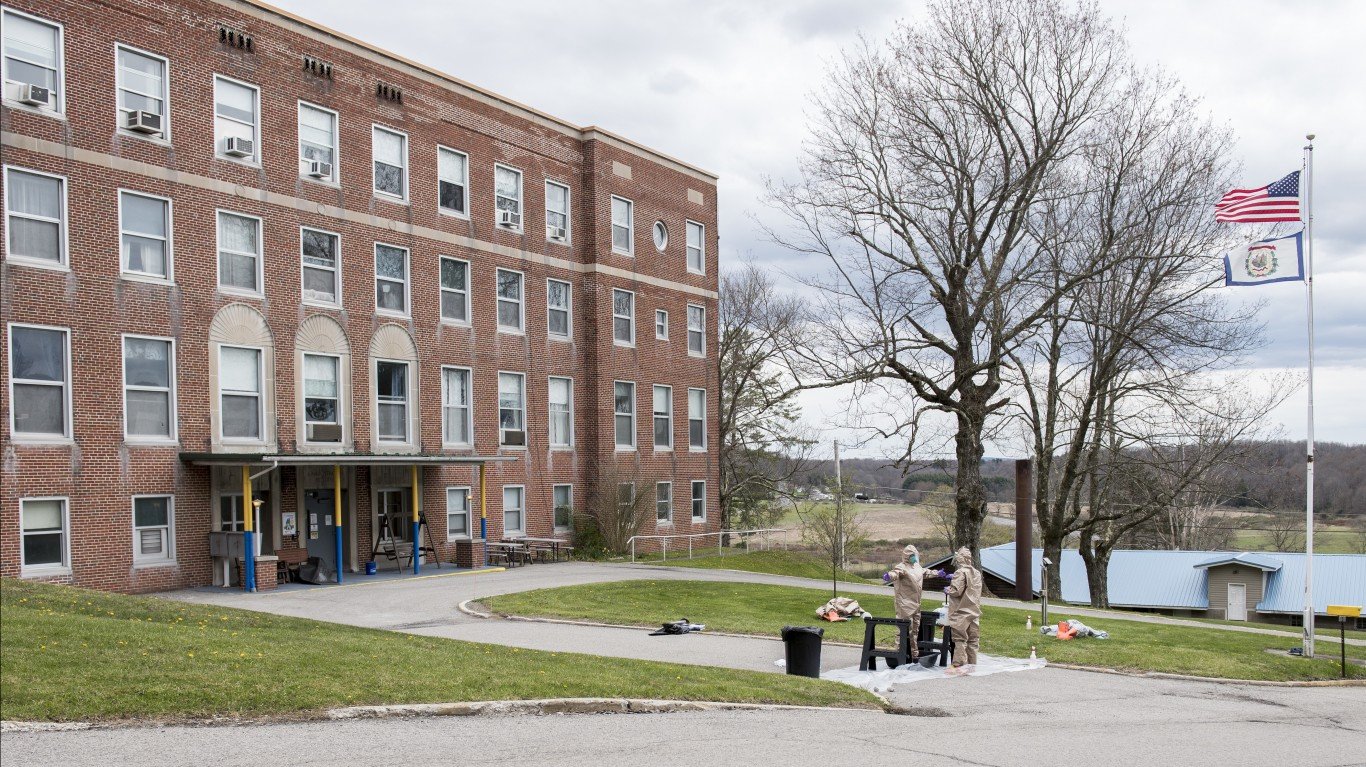
 24/7 Wall St.
24/7 Wall St. 24/7 Wall St.
24/7 Wall St.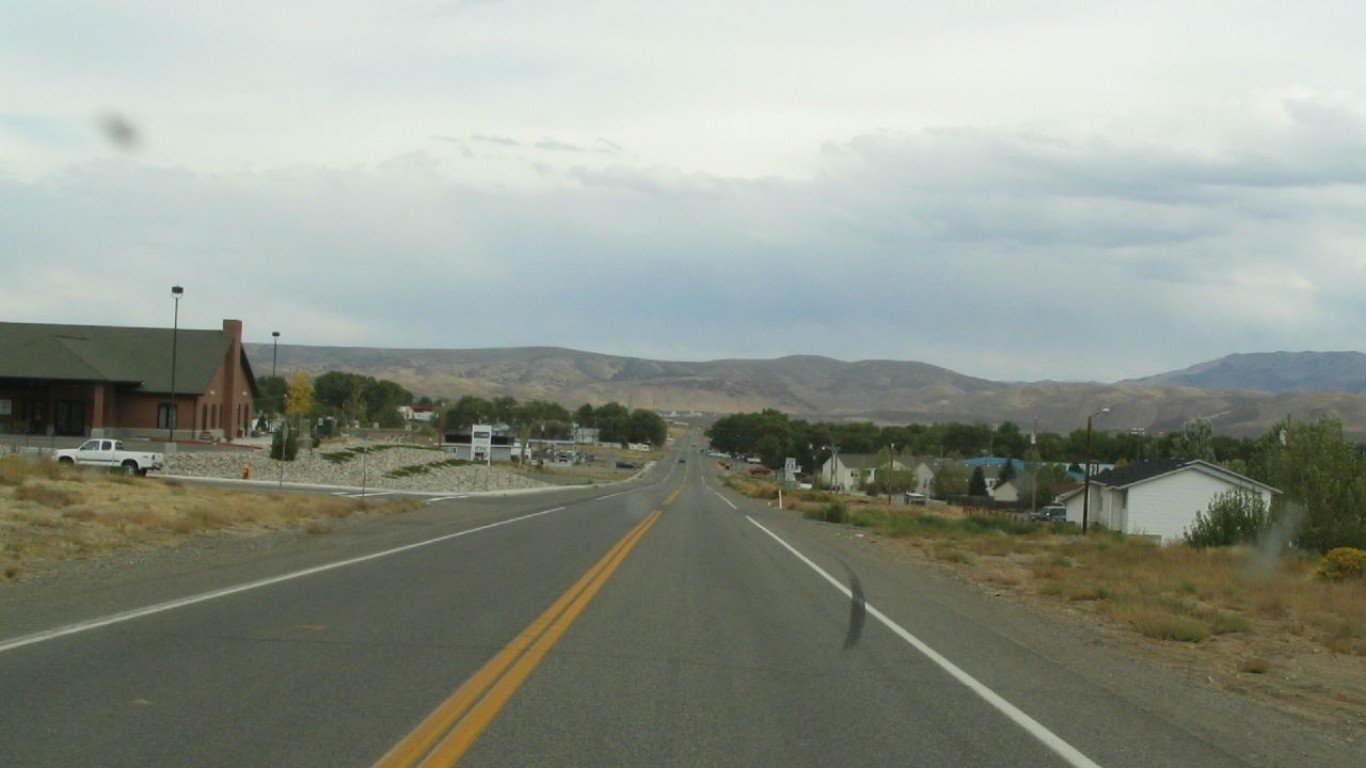
 24/7 Wall St.
24/7 Wall St. 24/7 Wall St.
24/7 Wall St.
